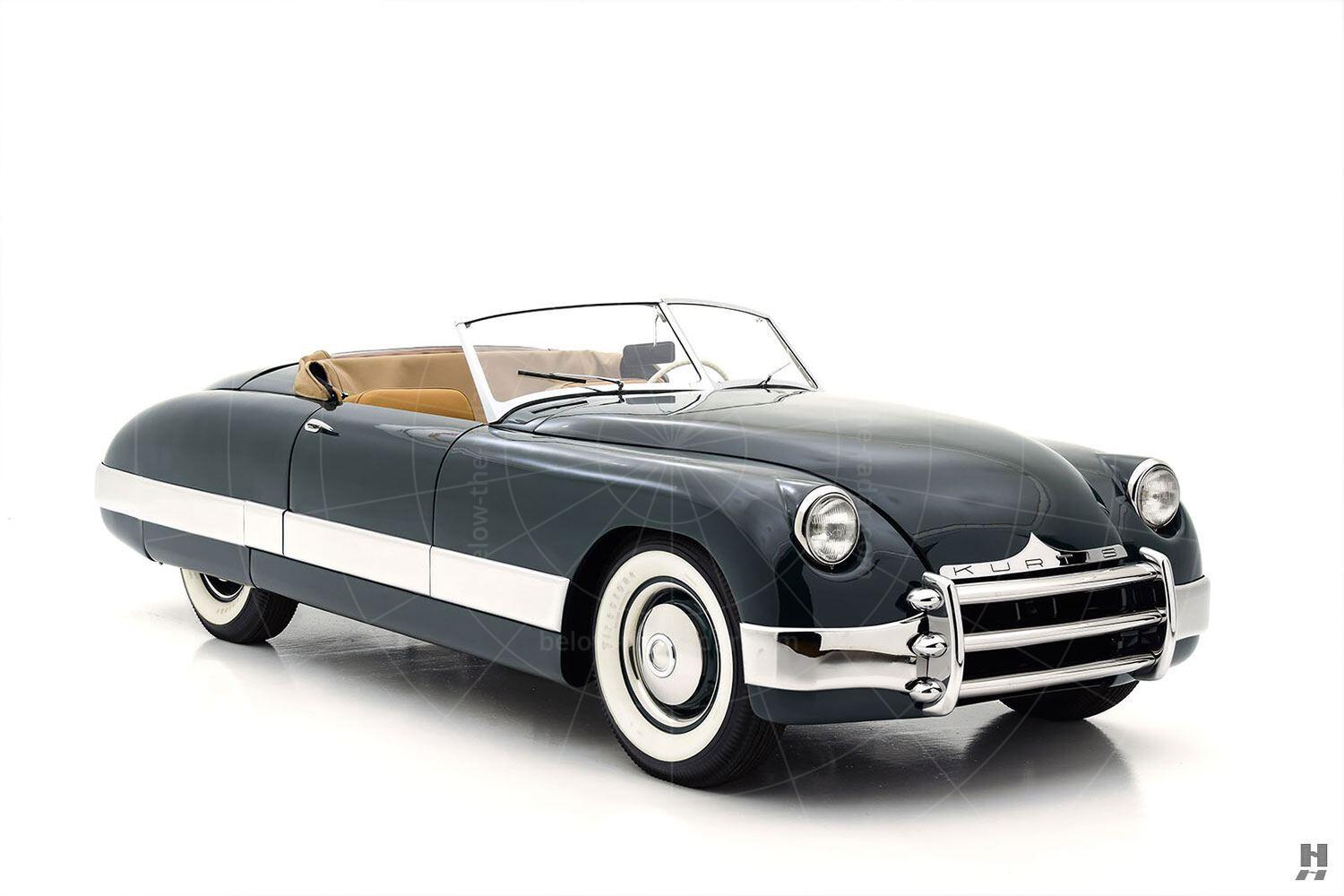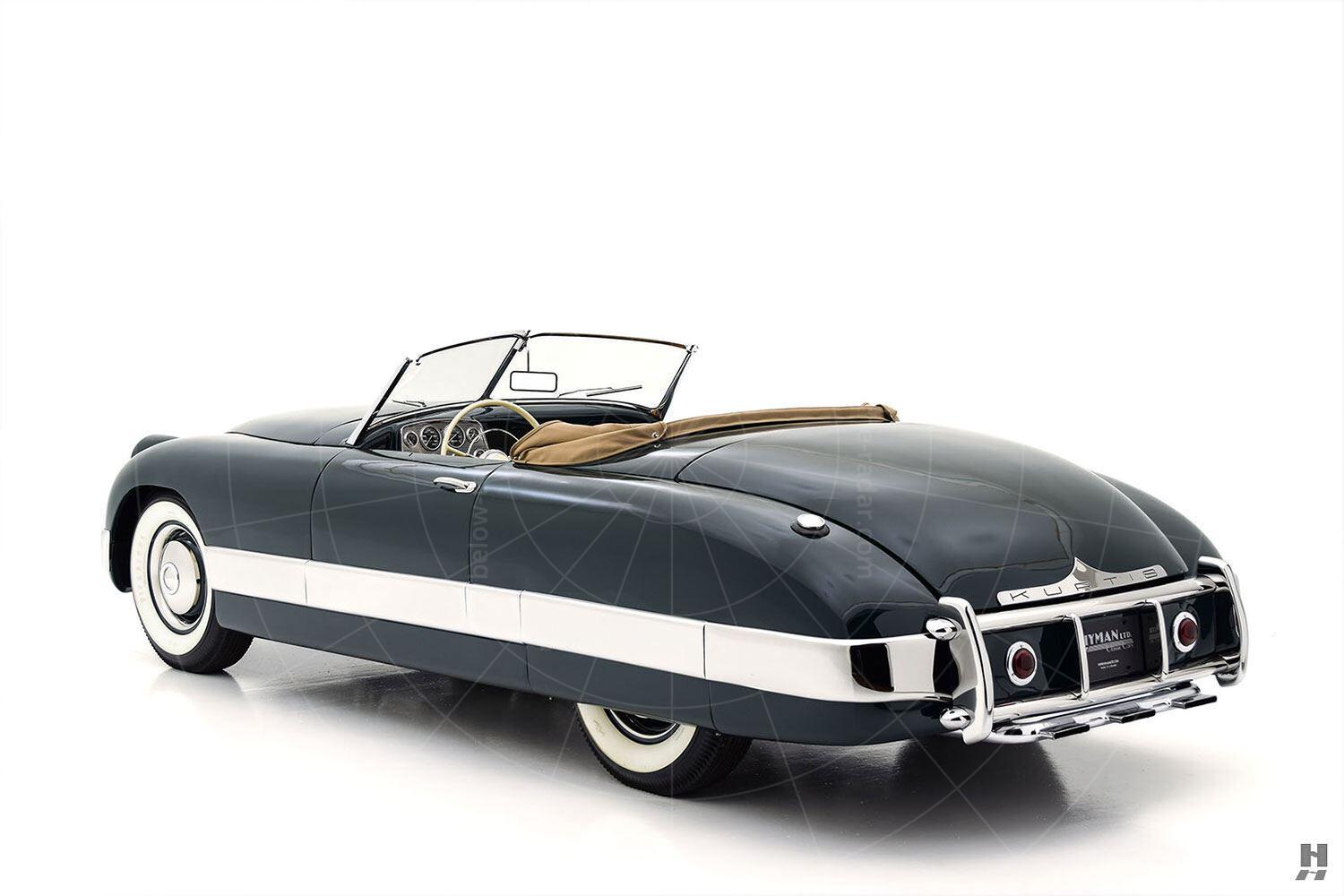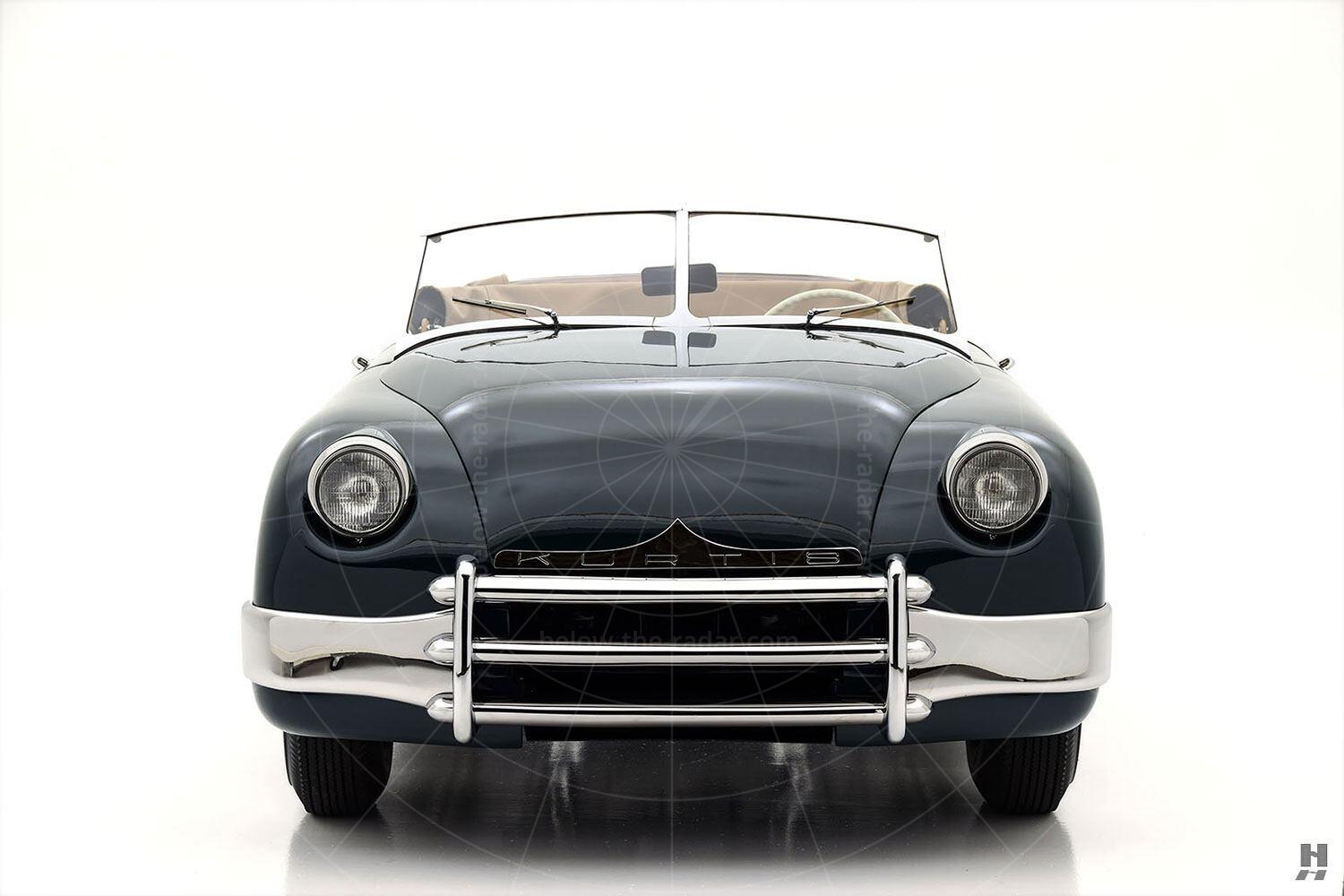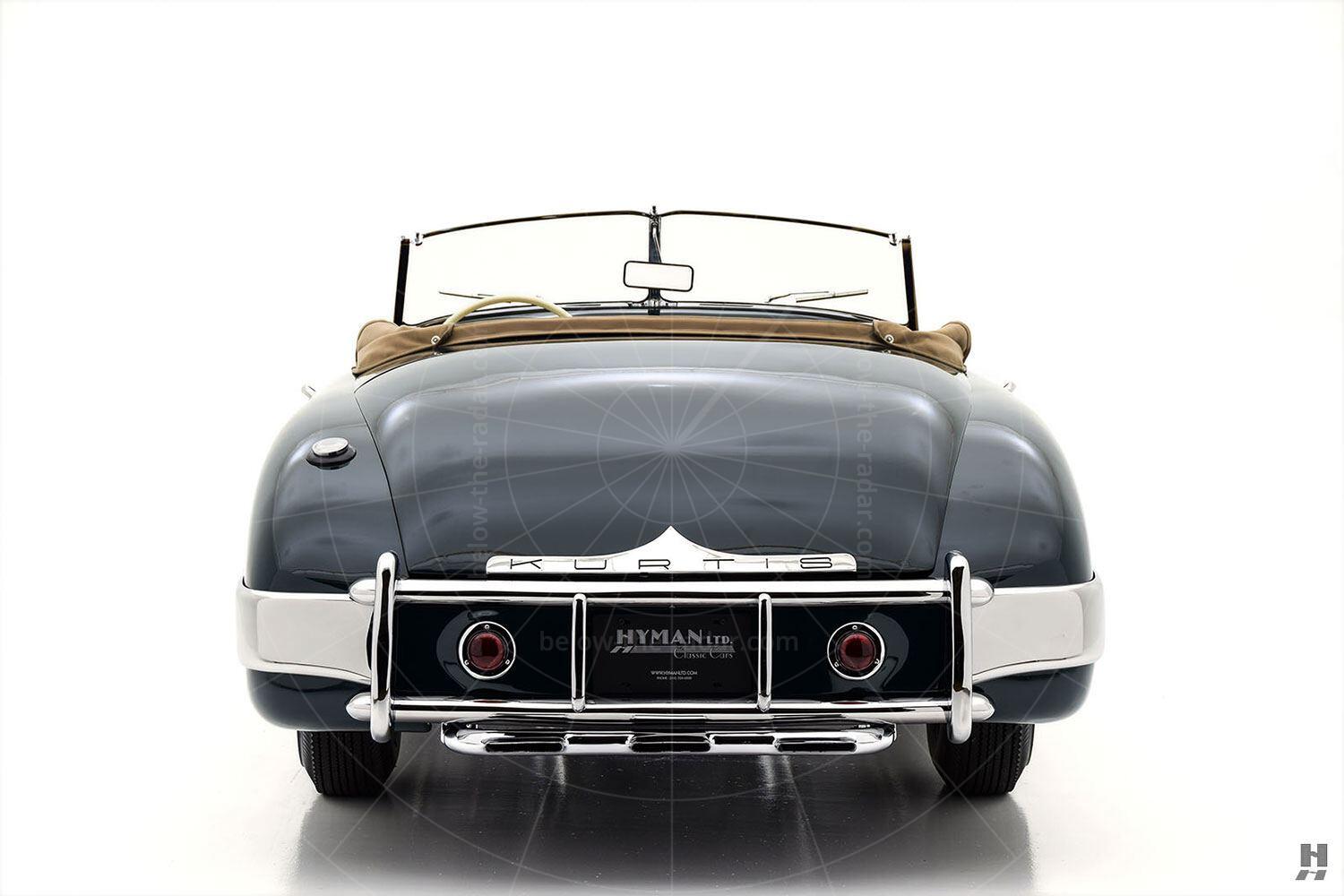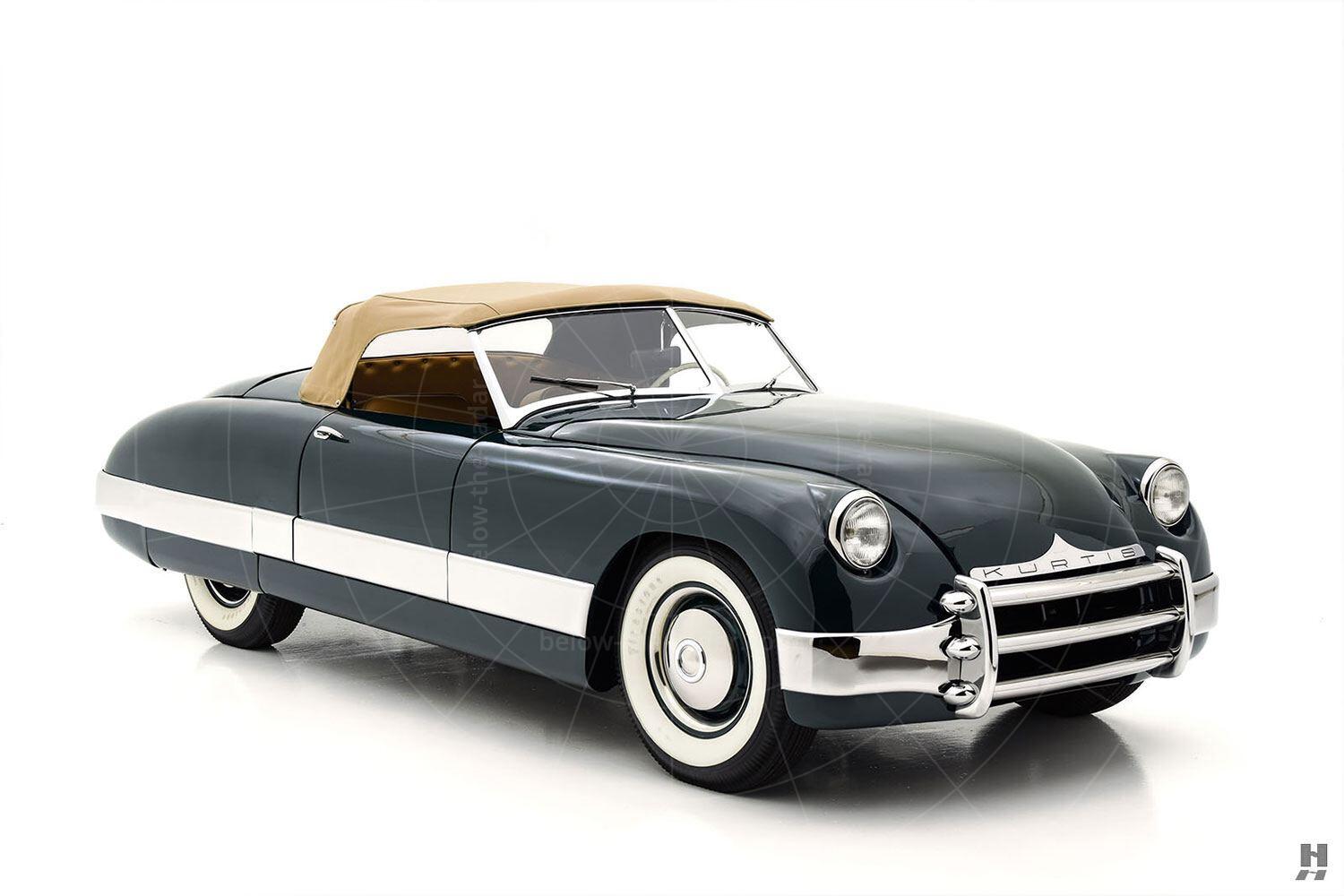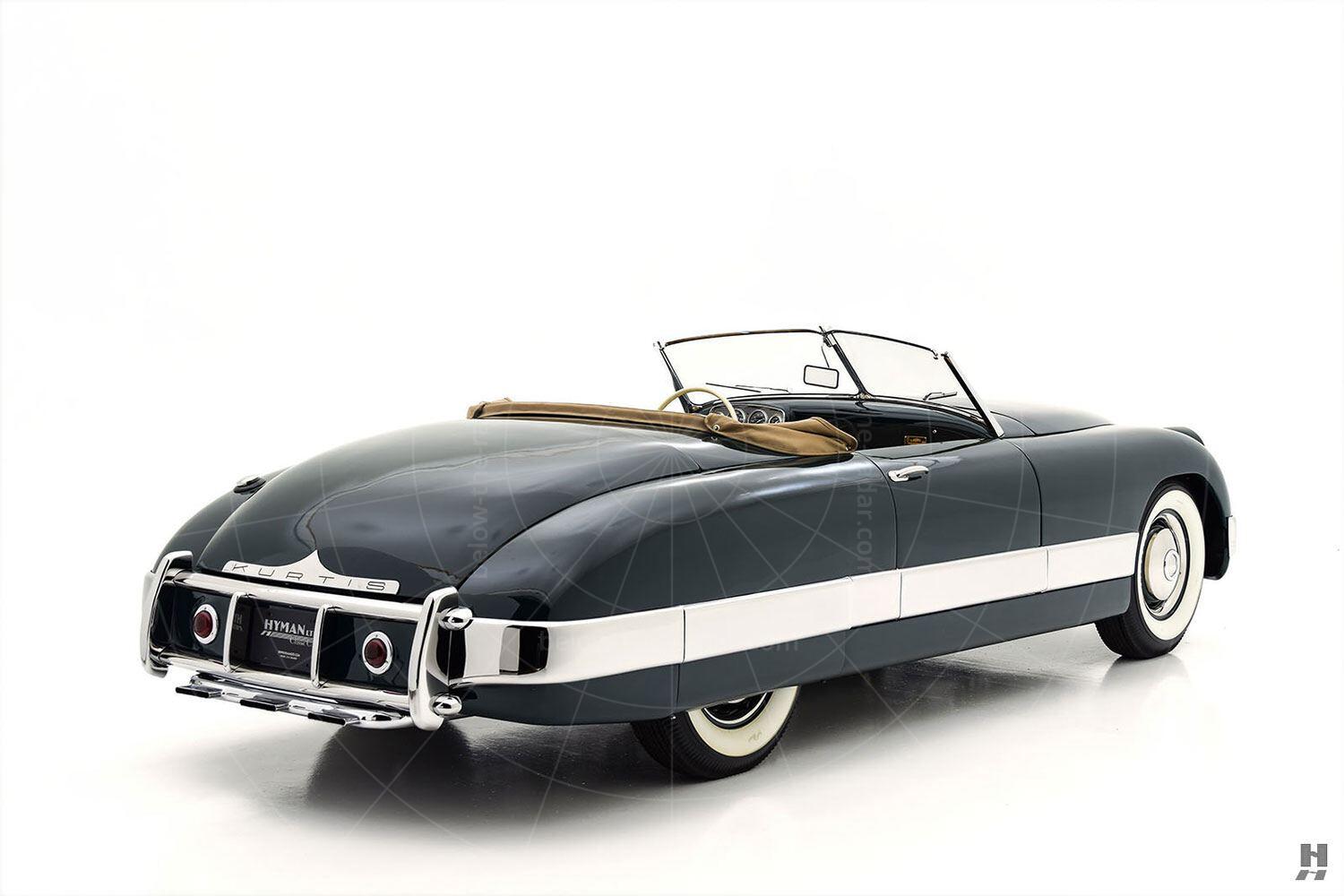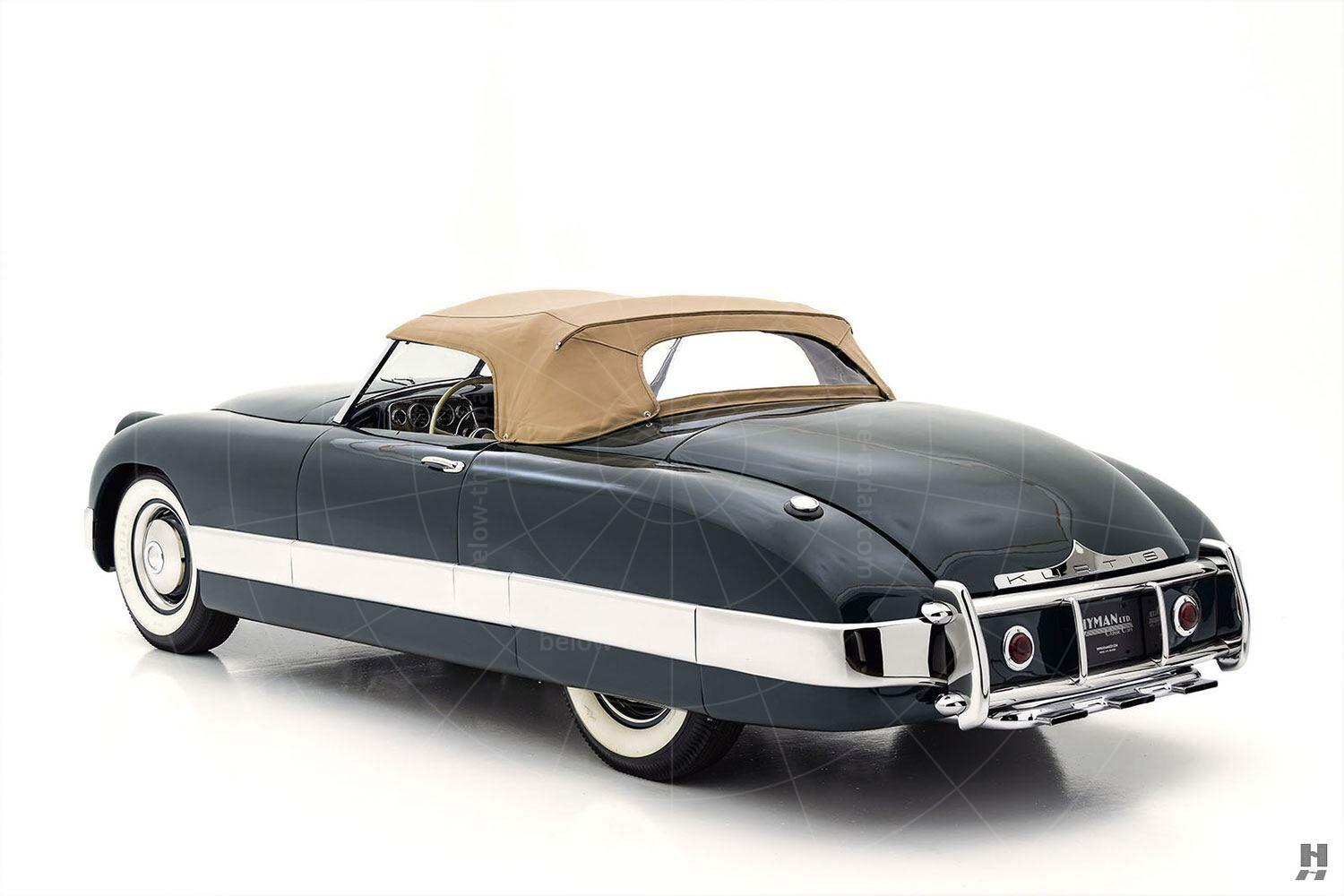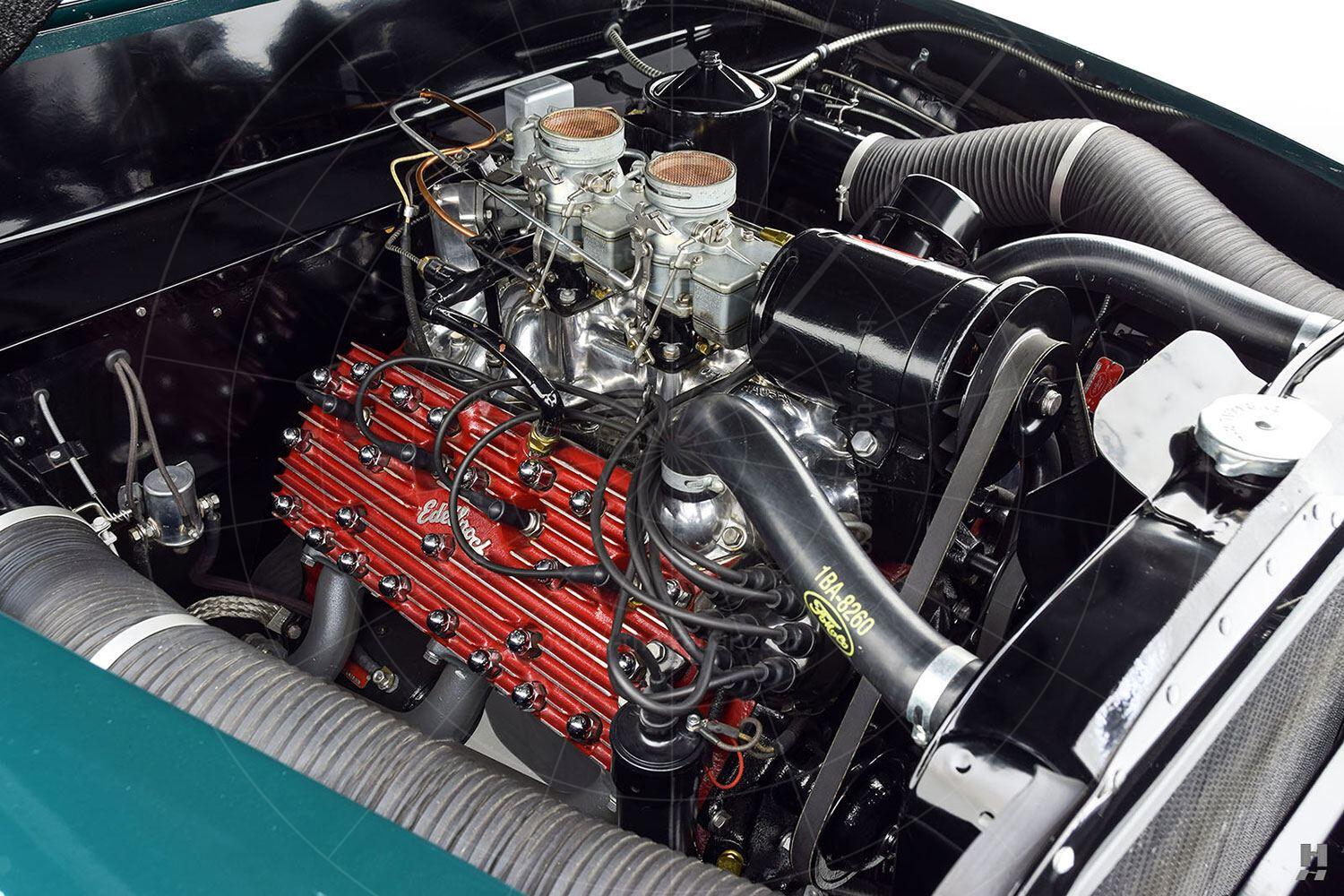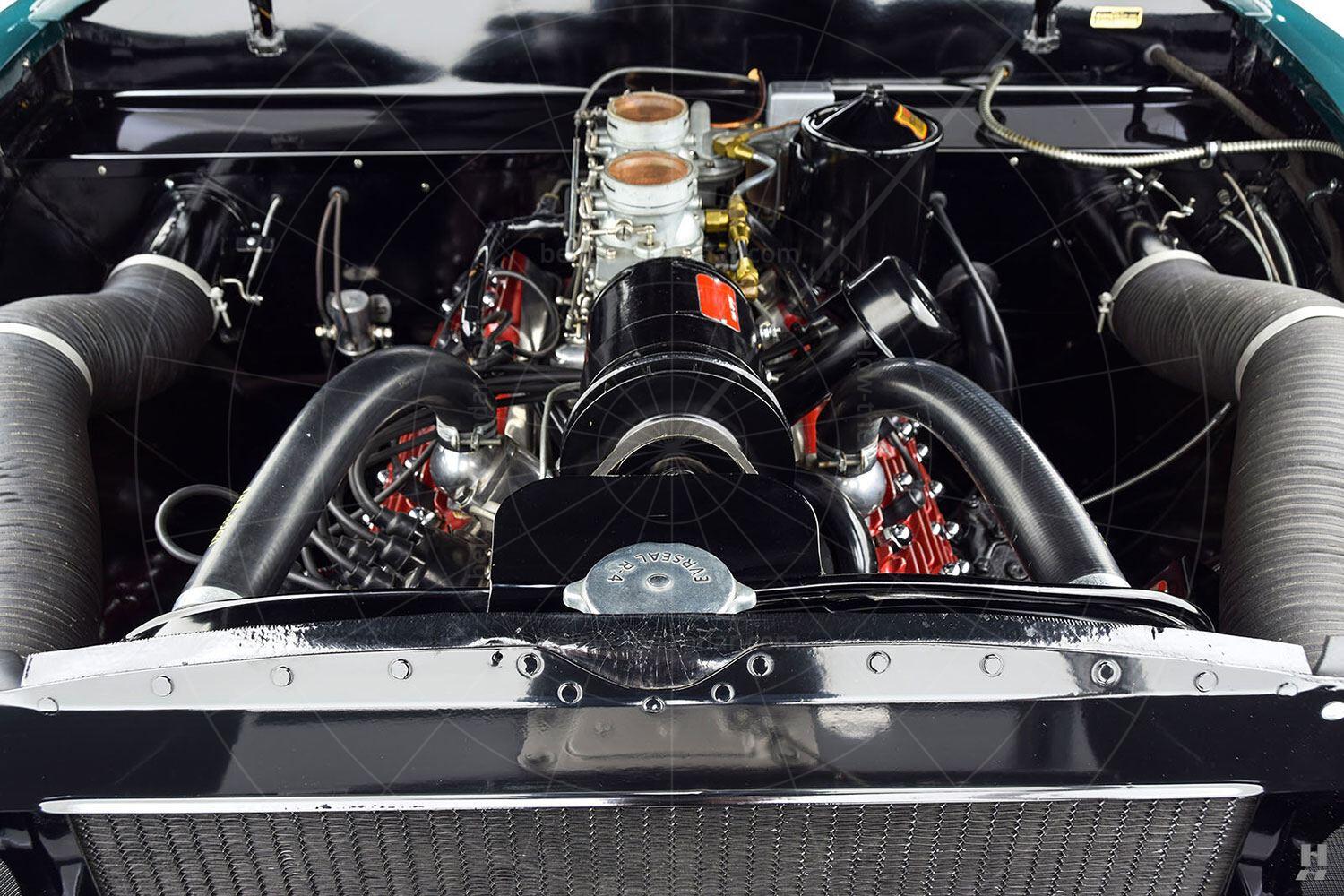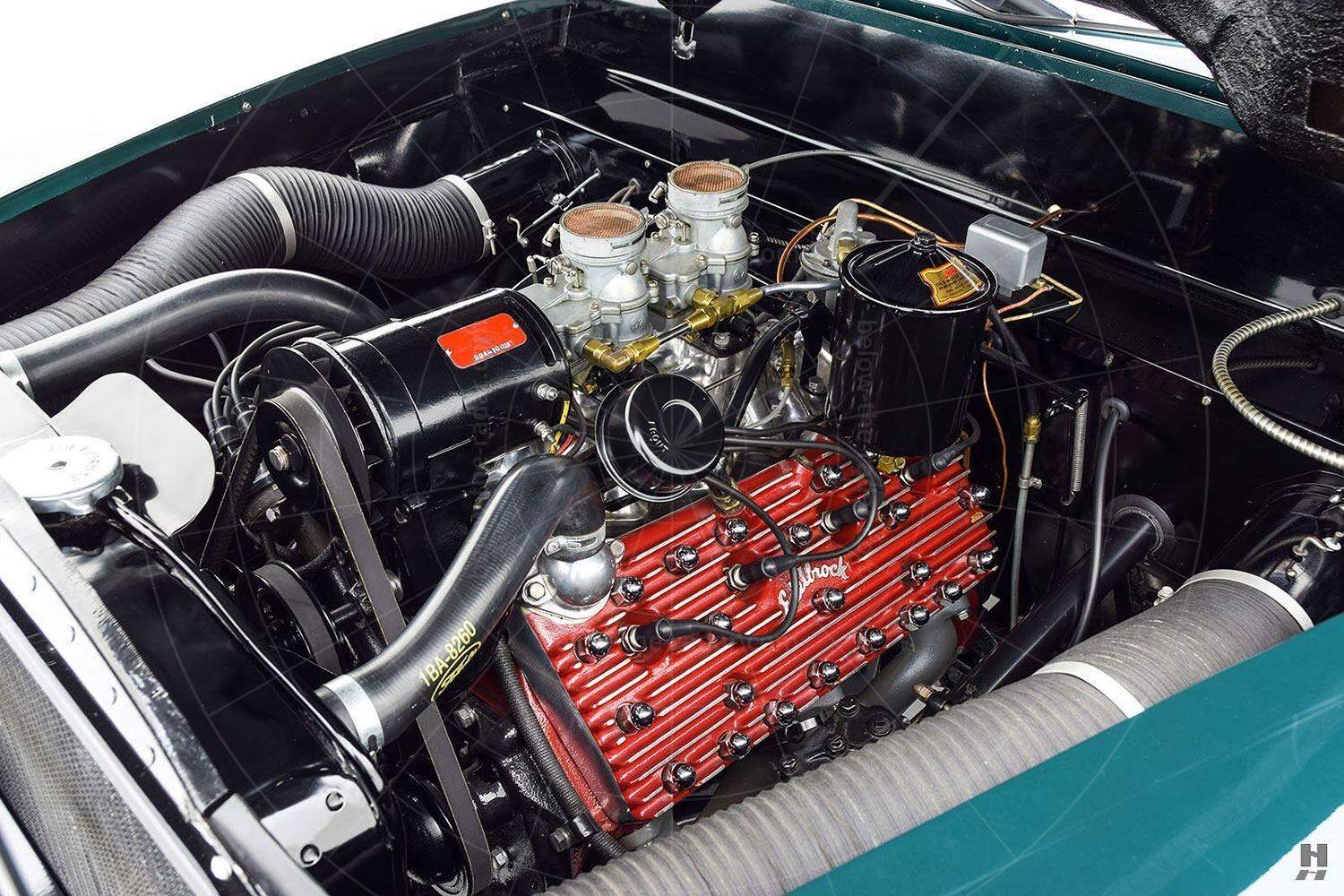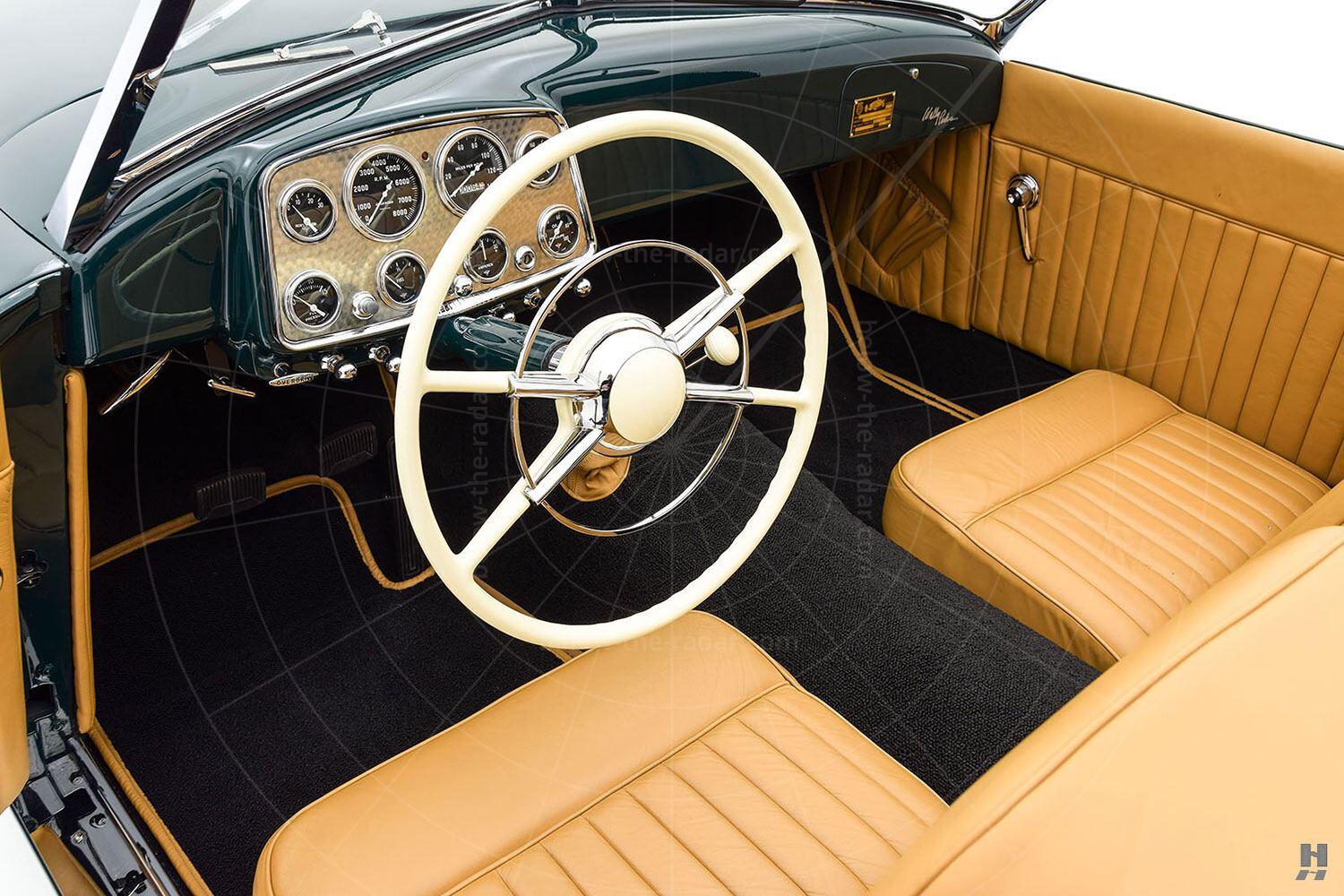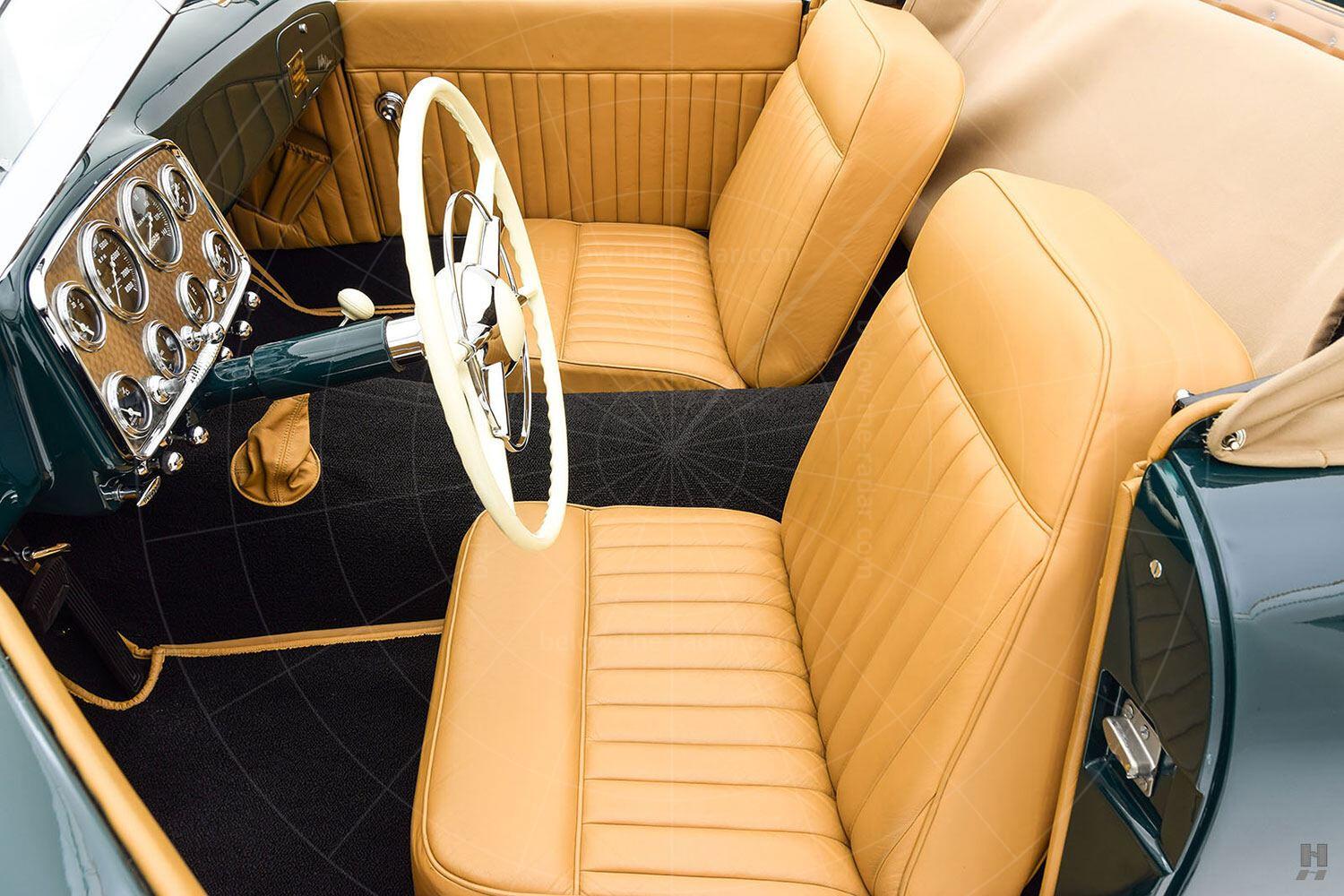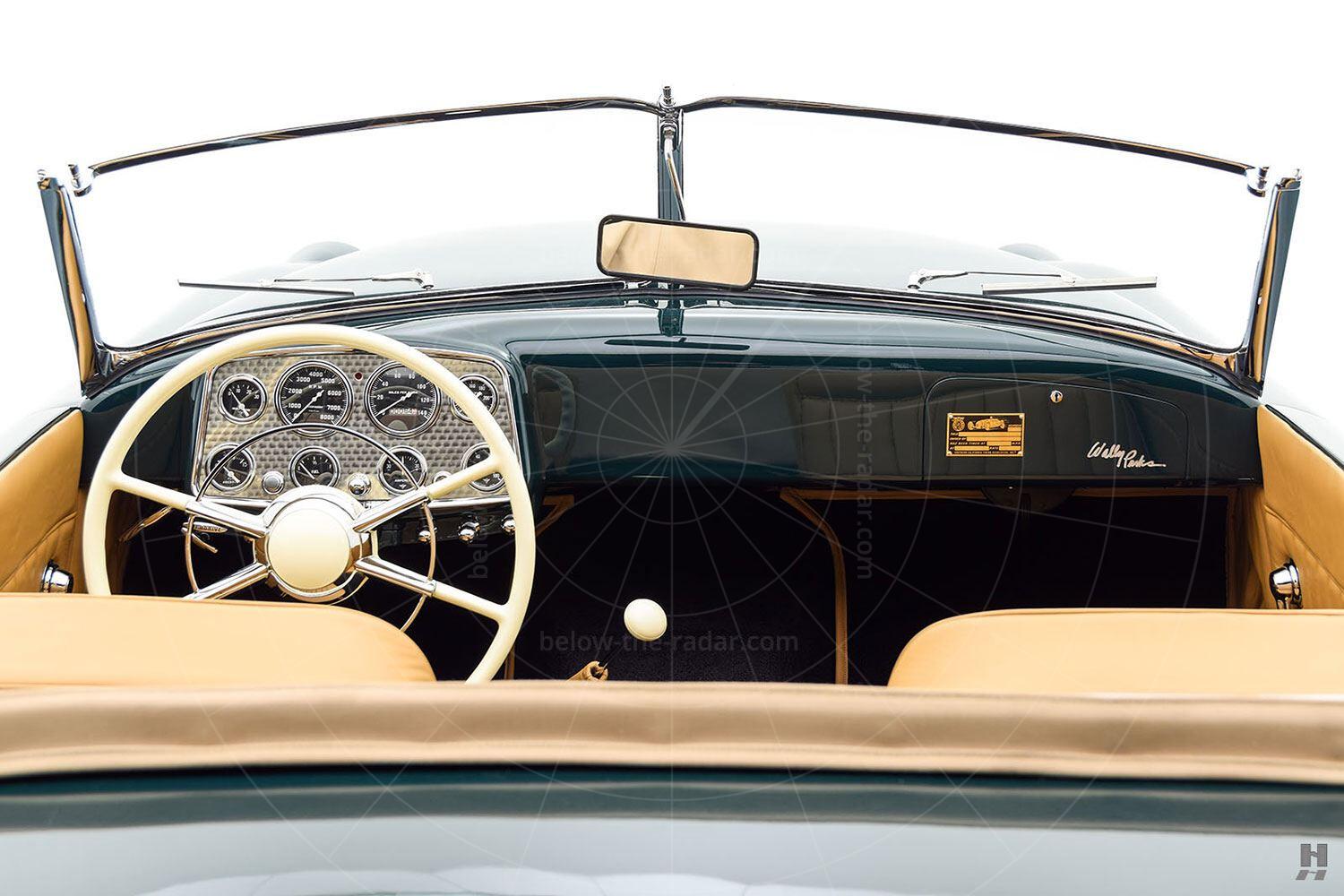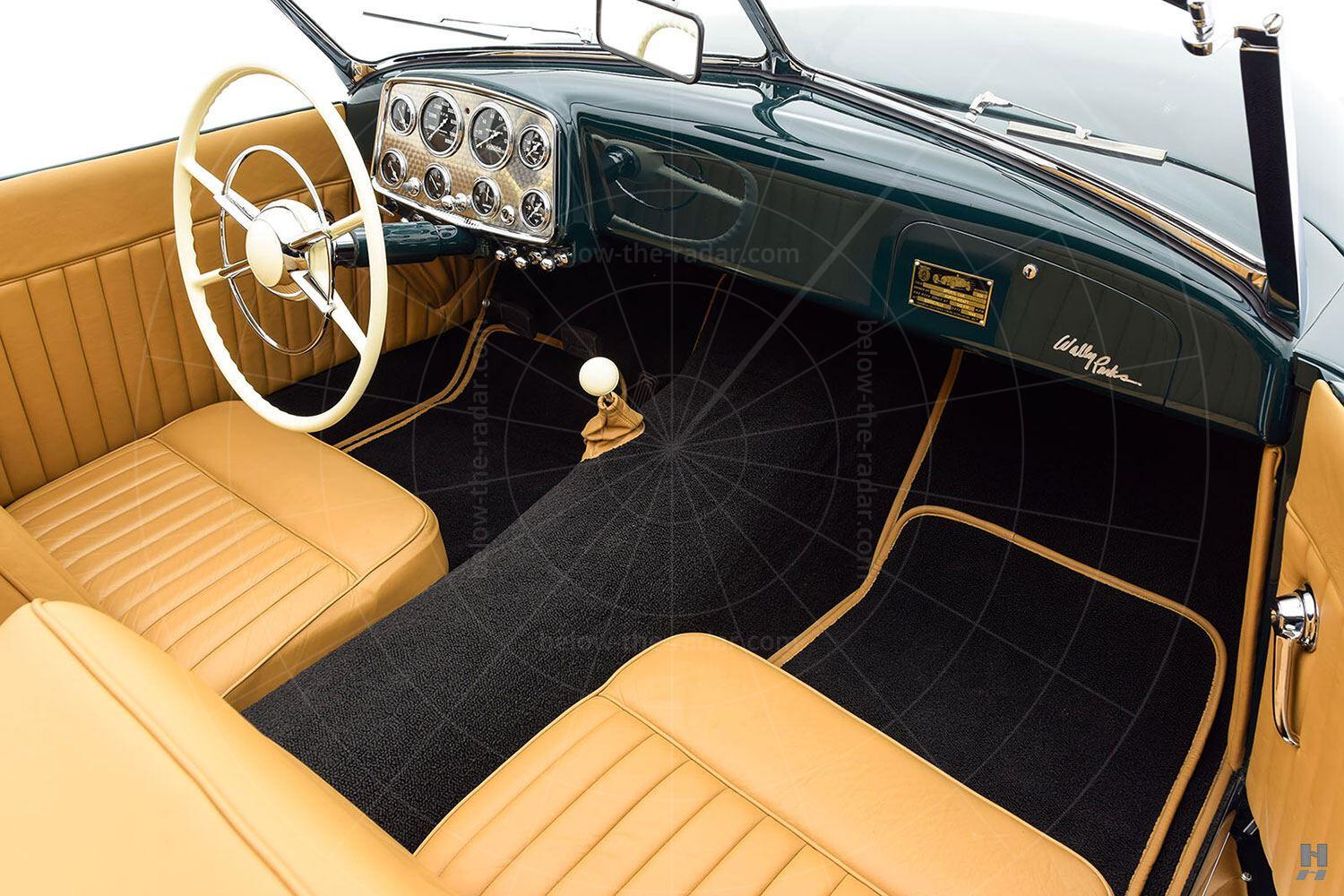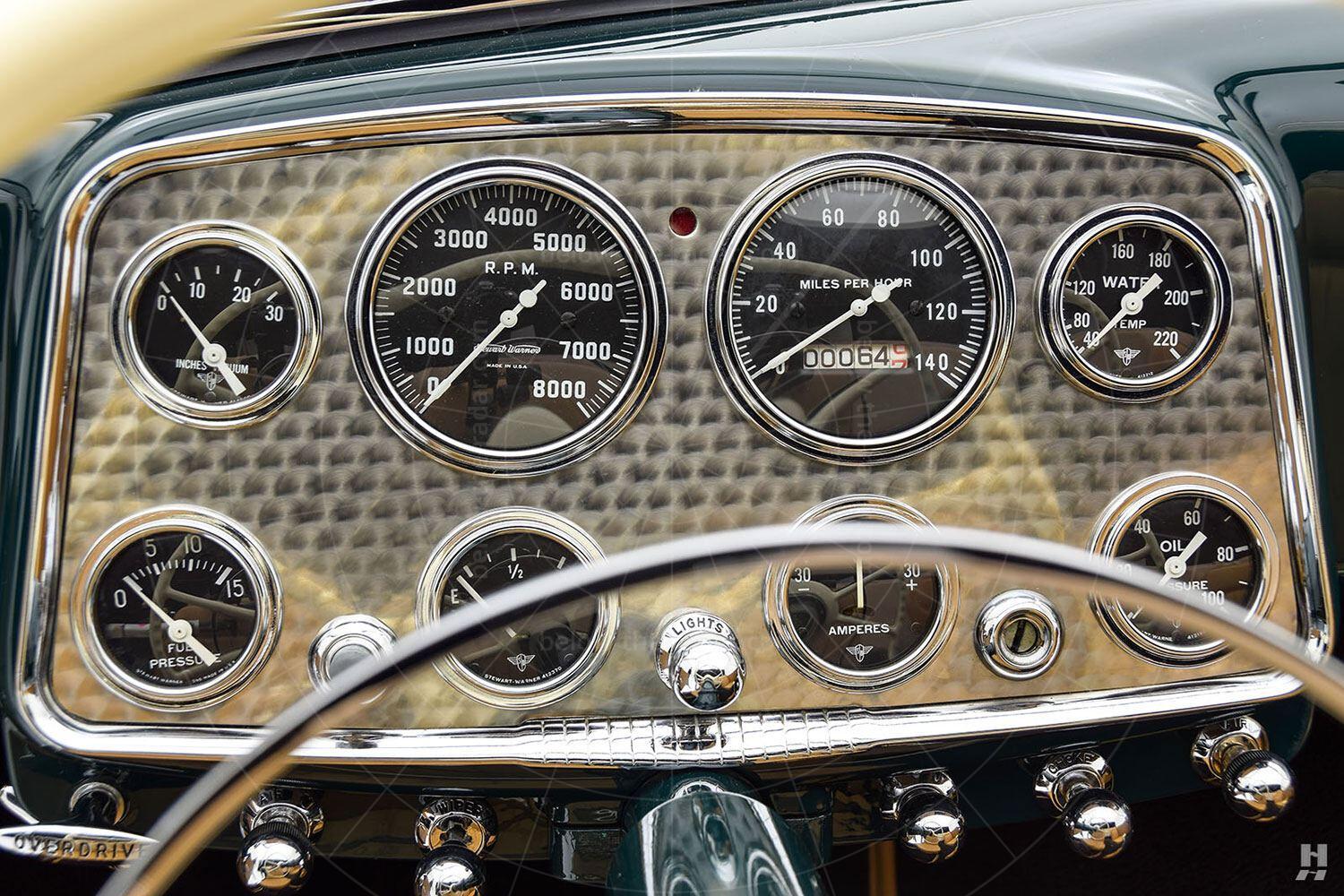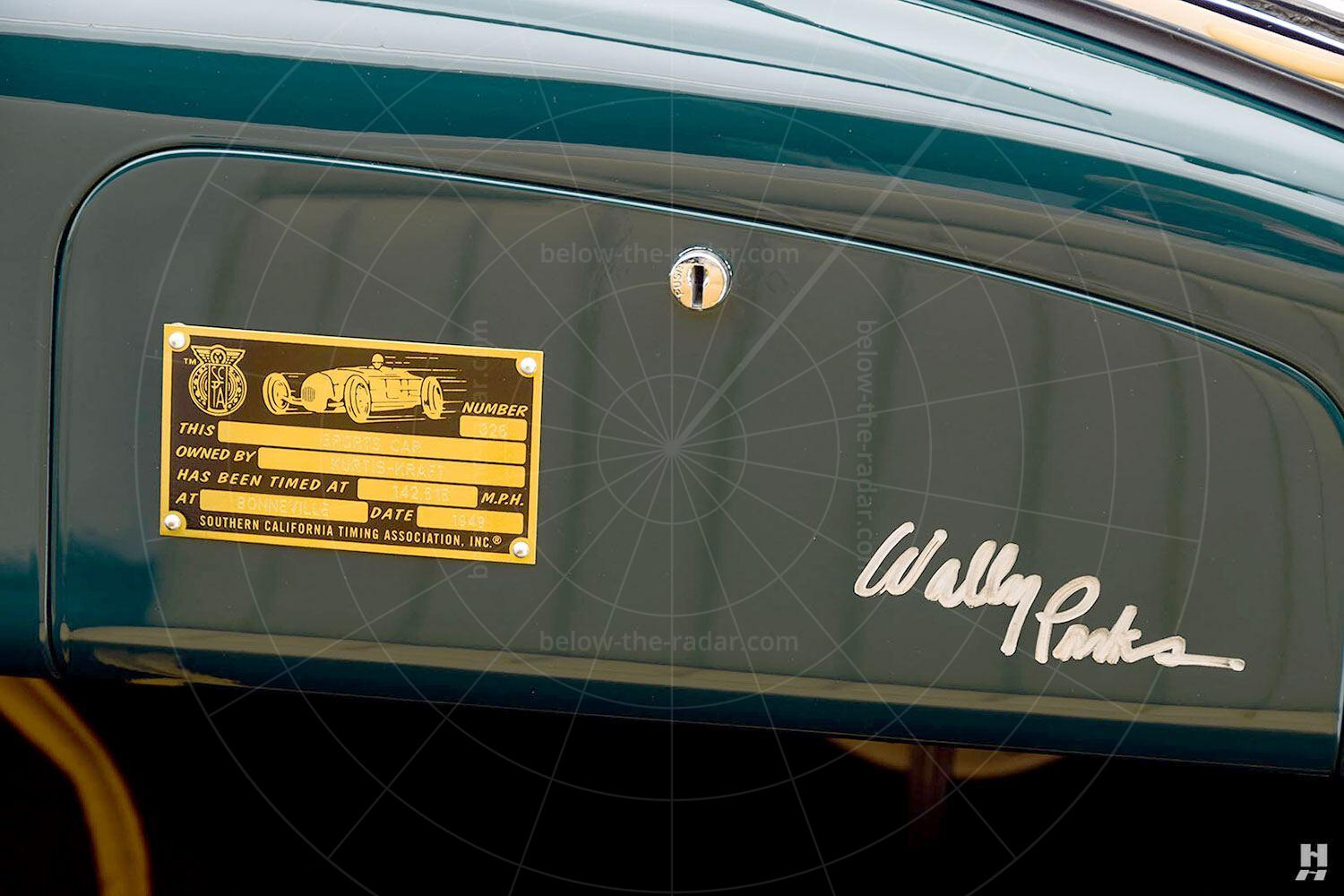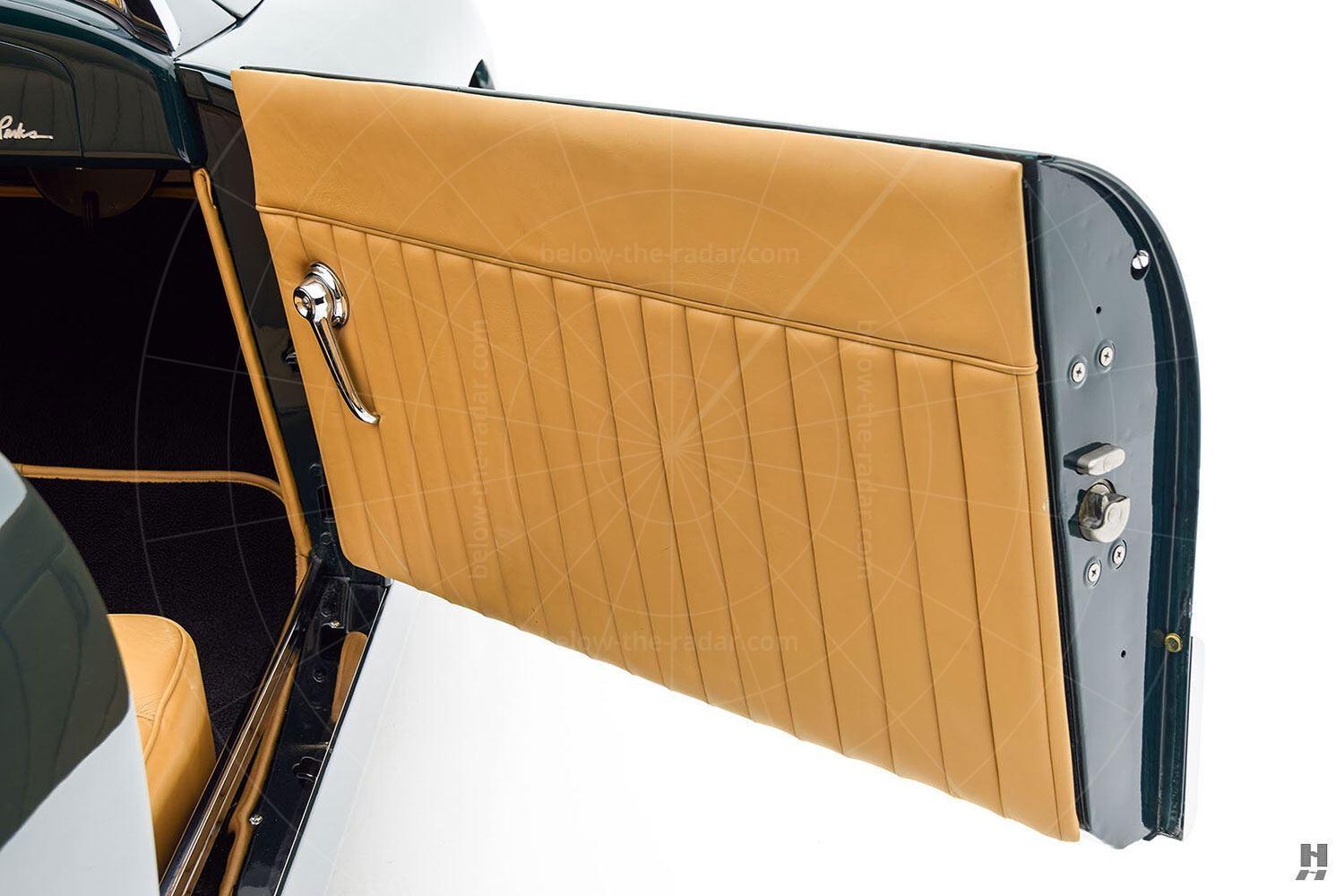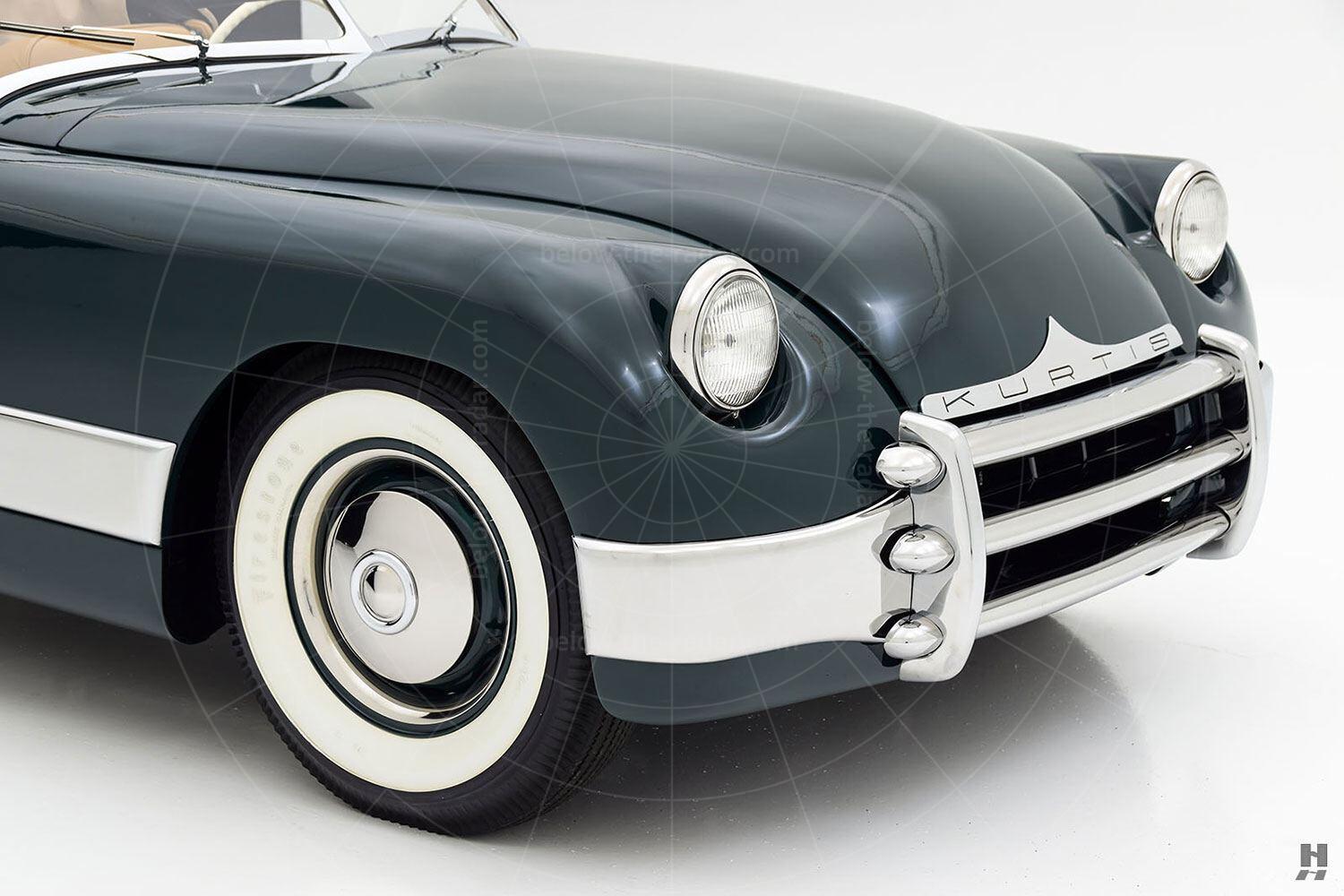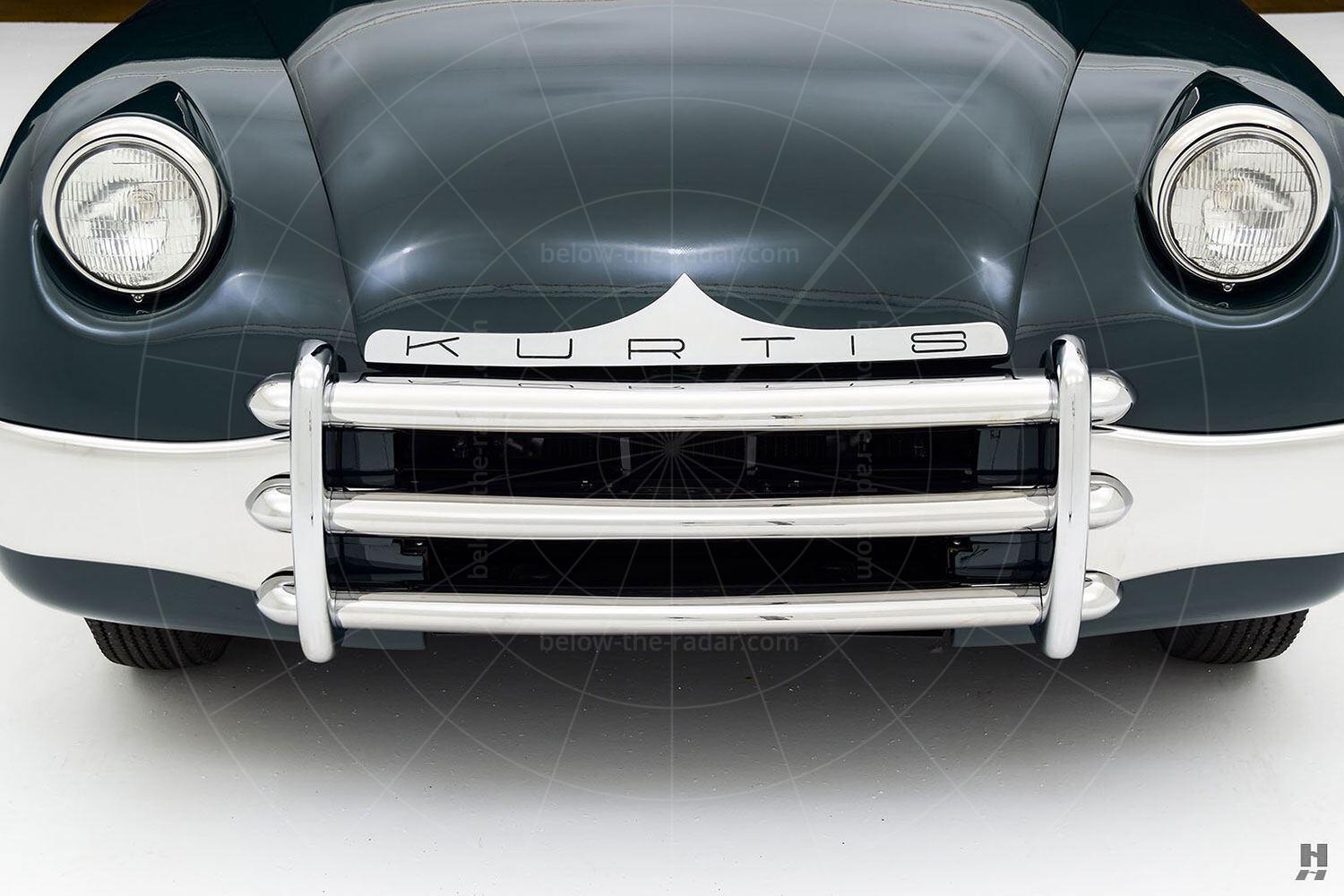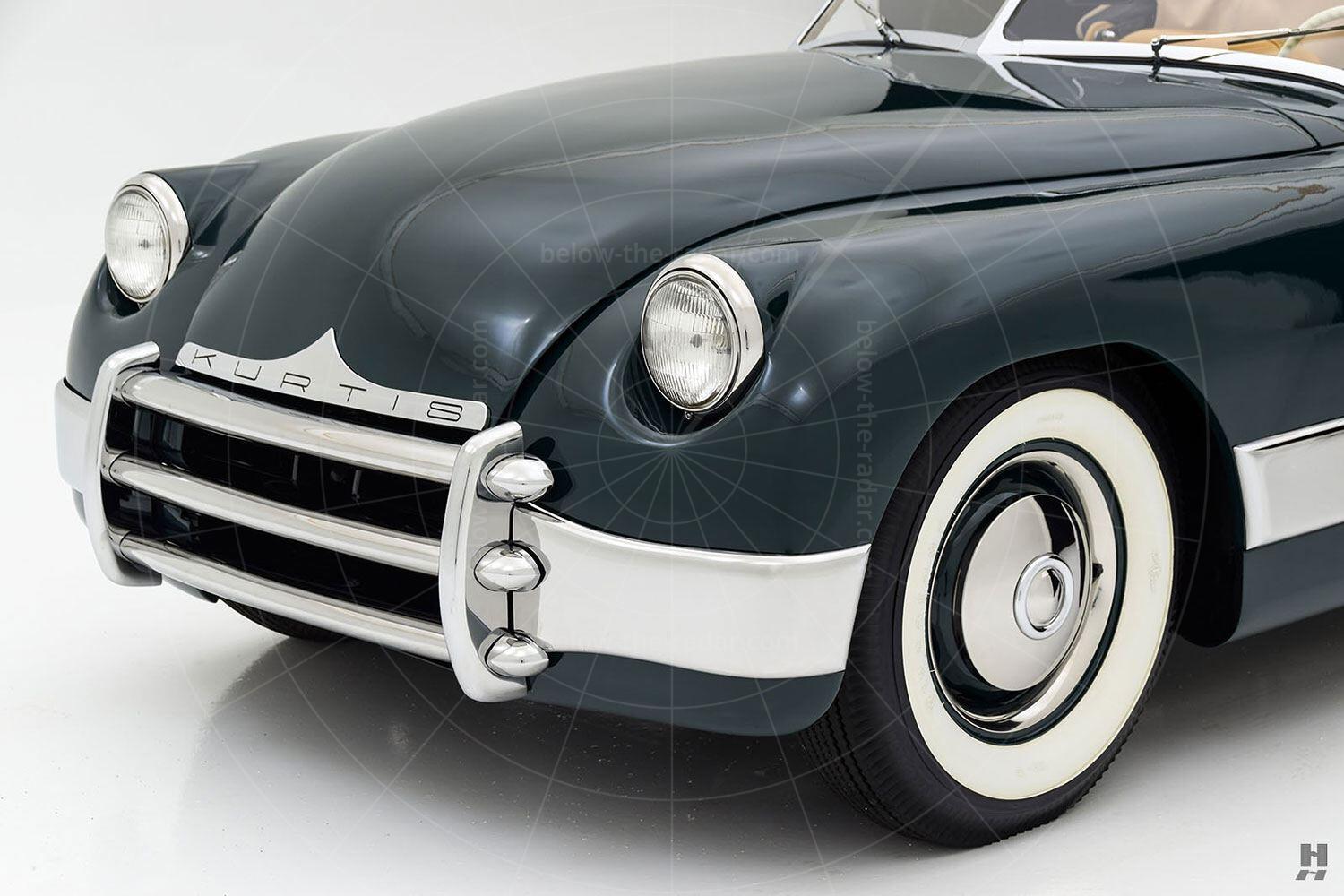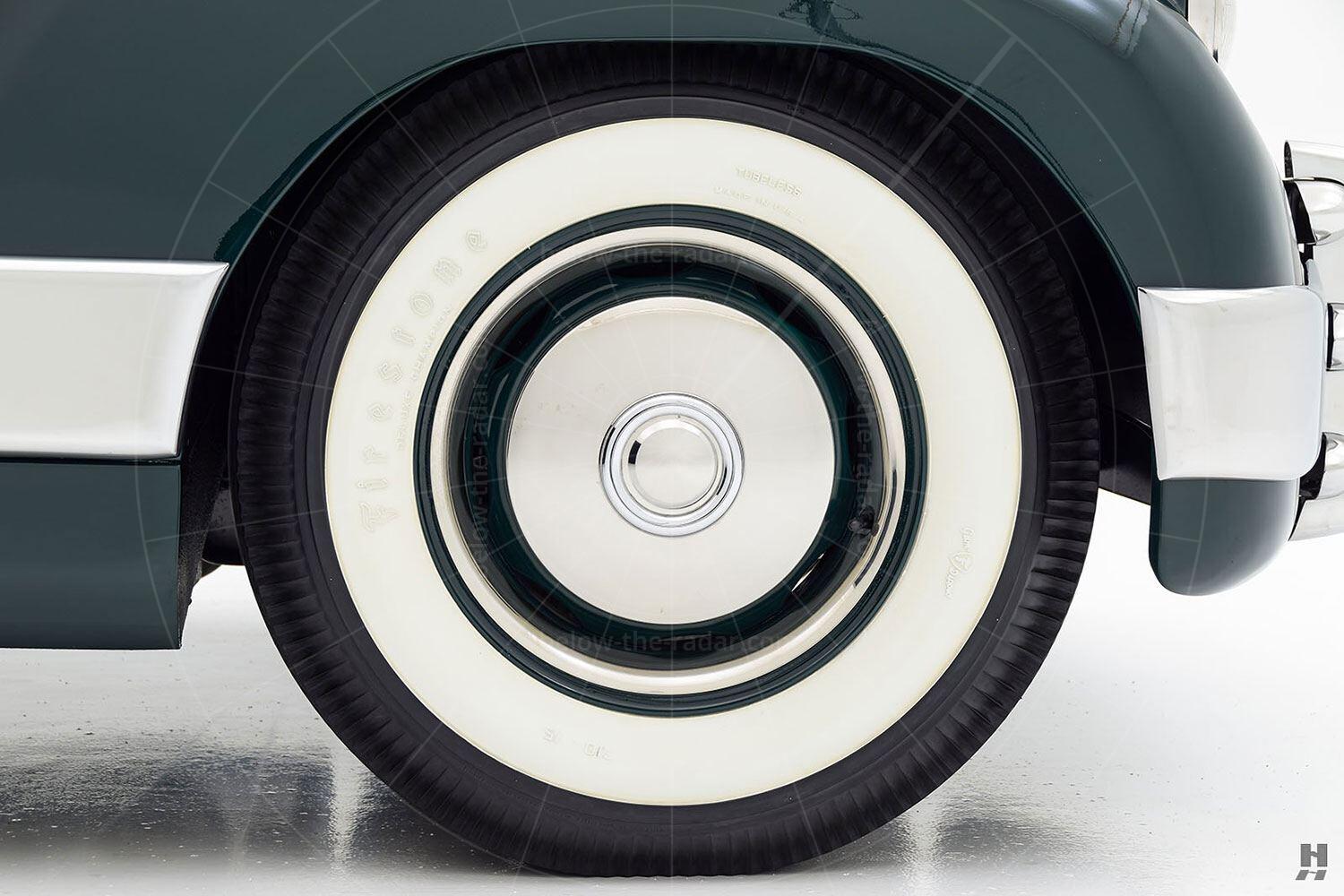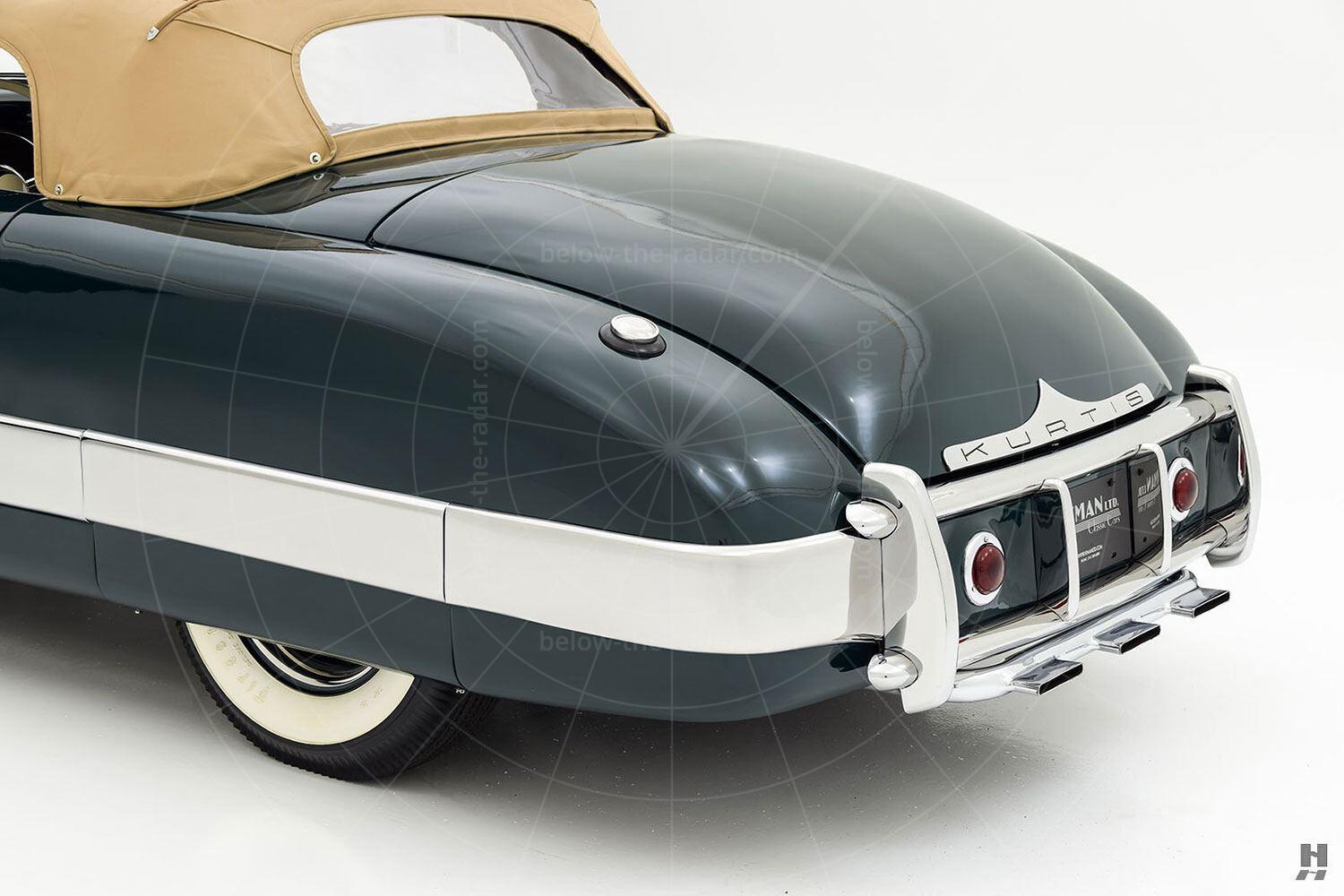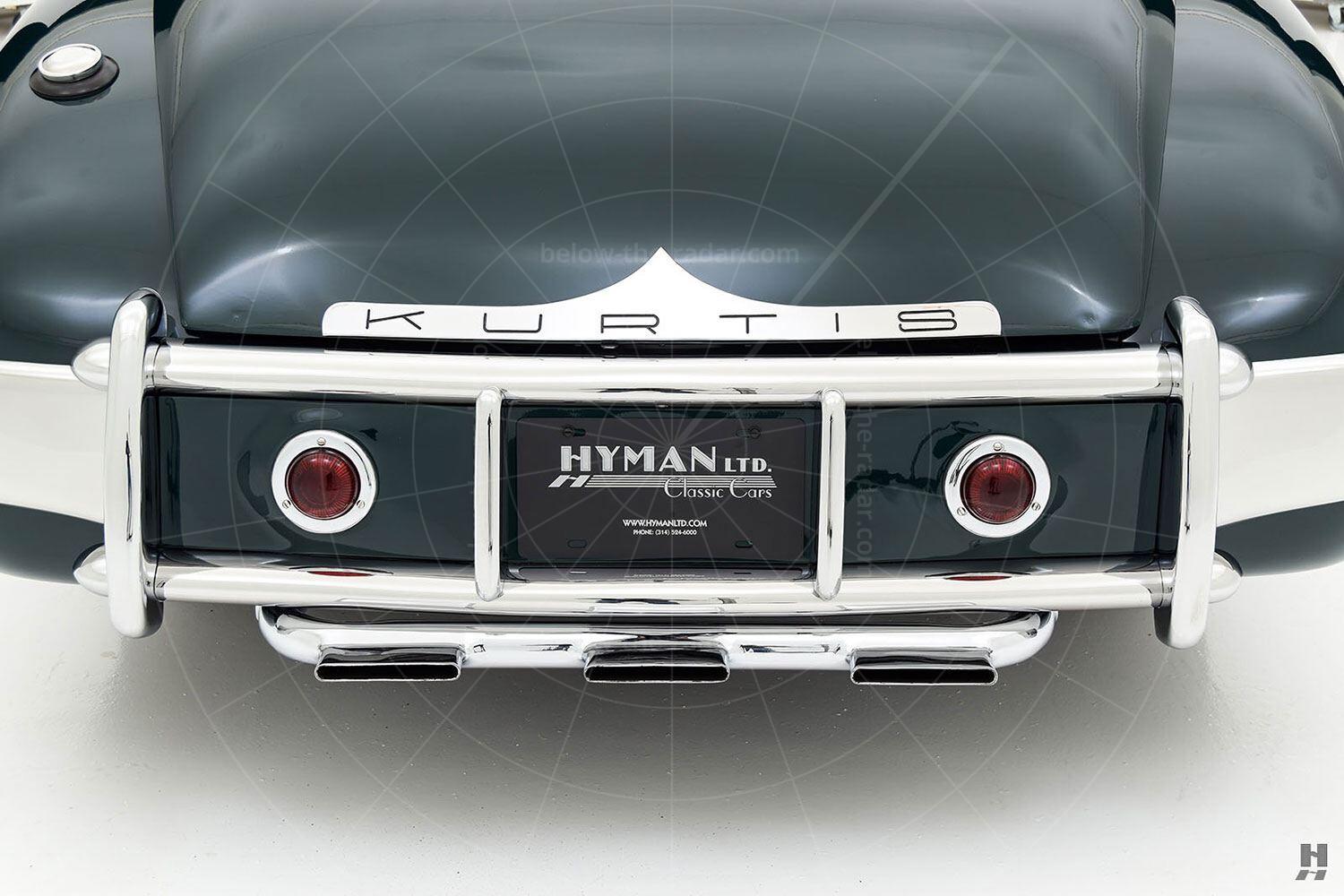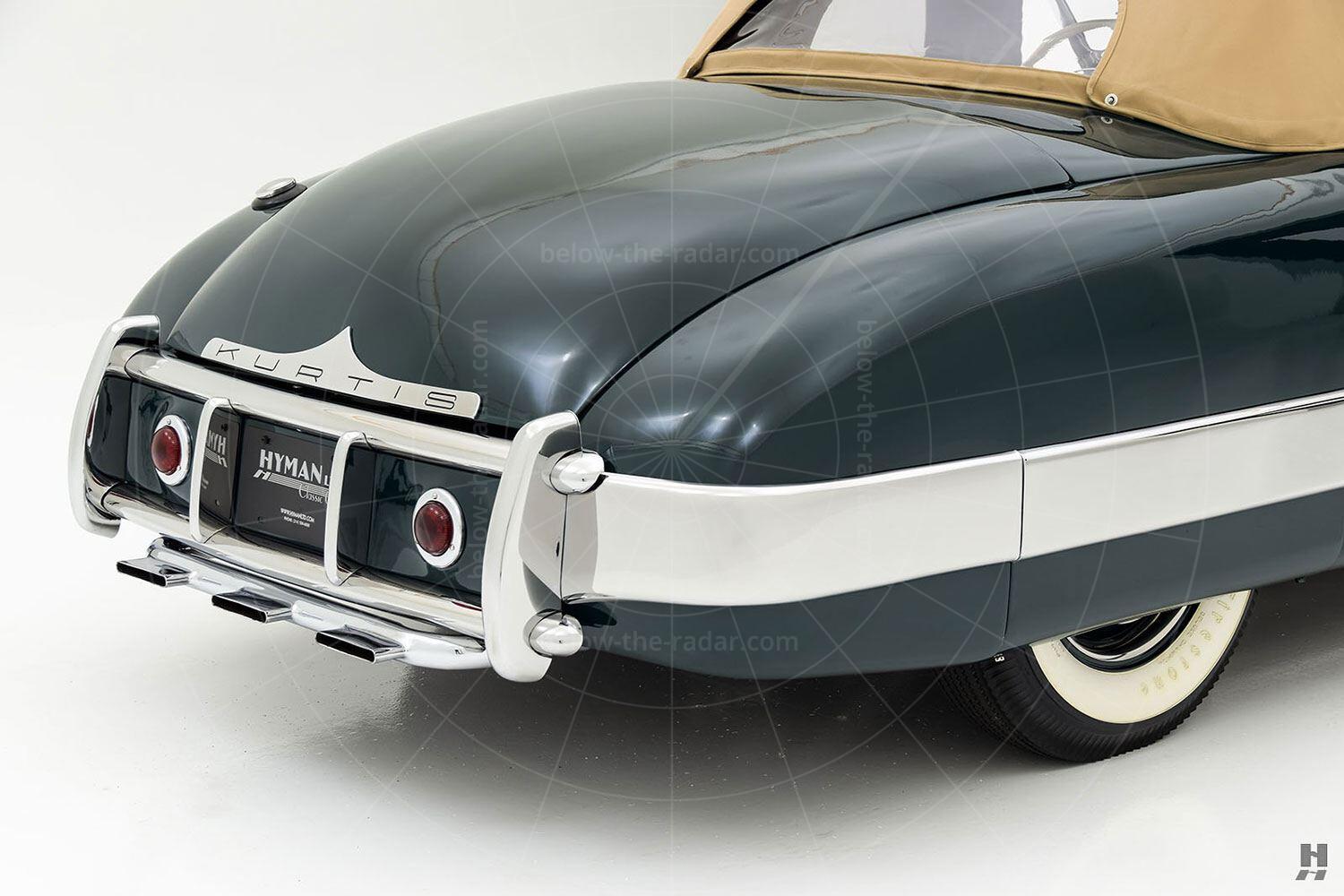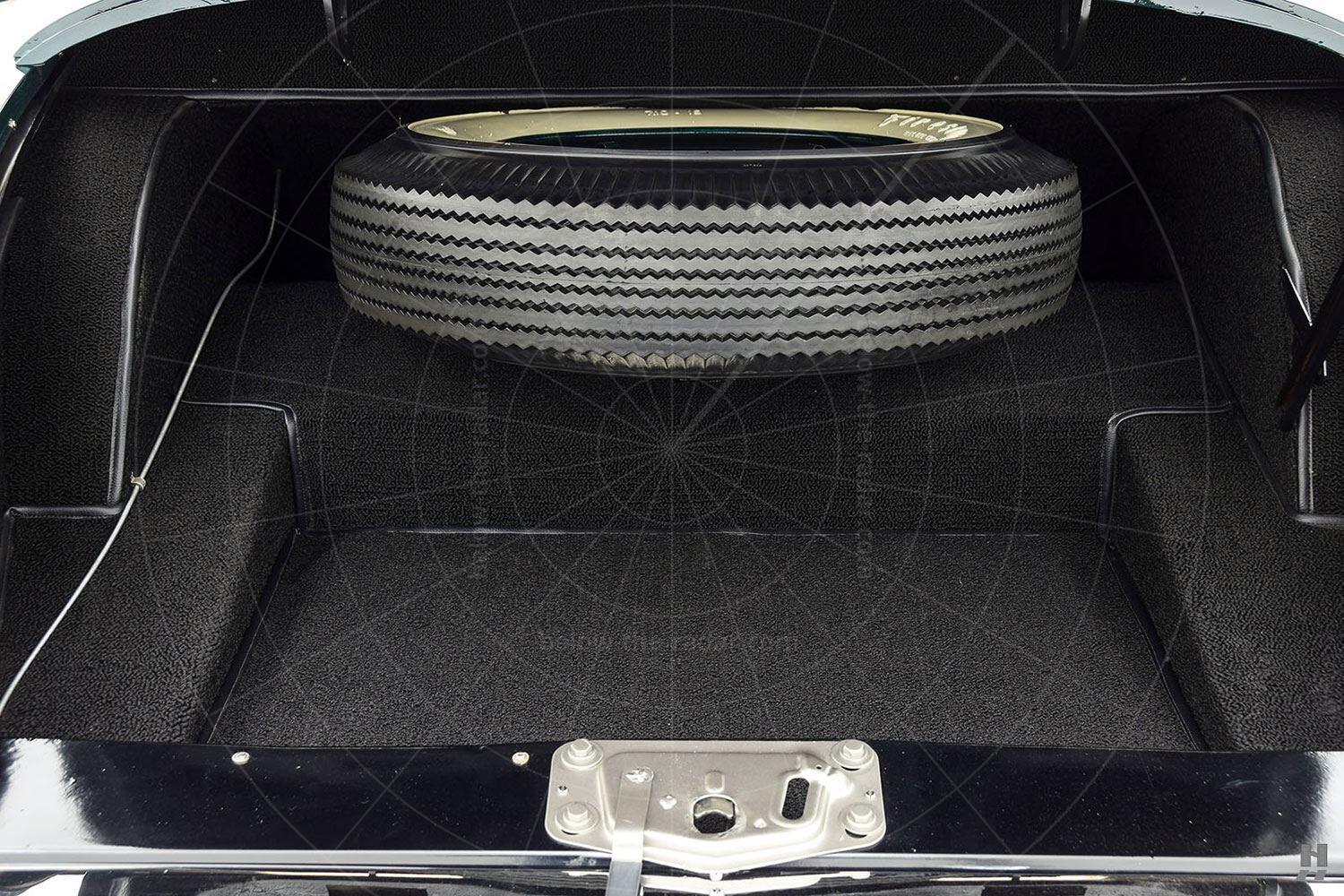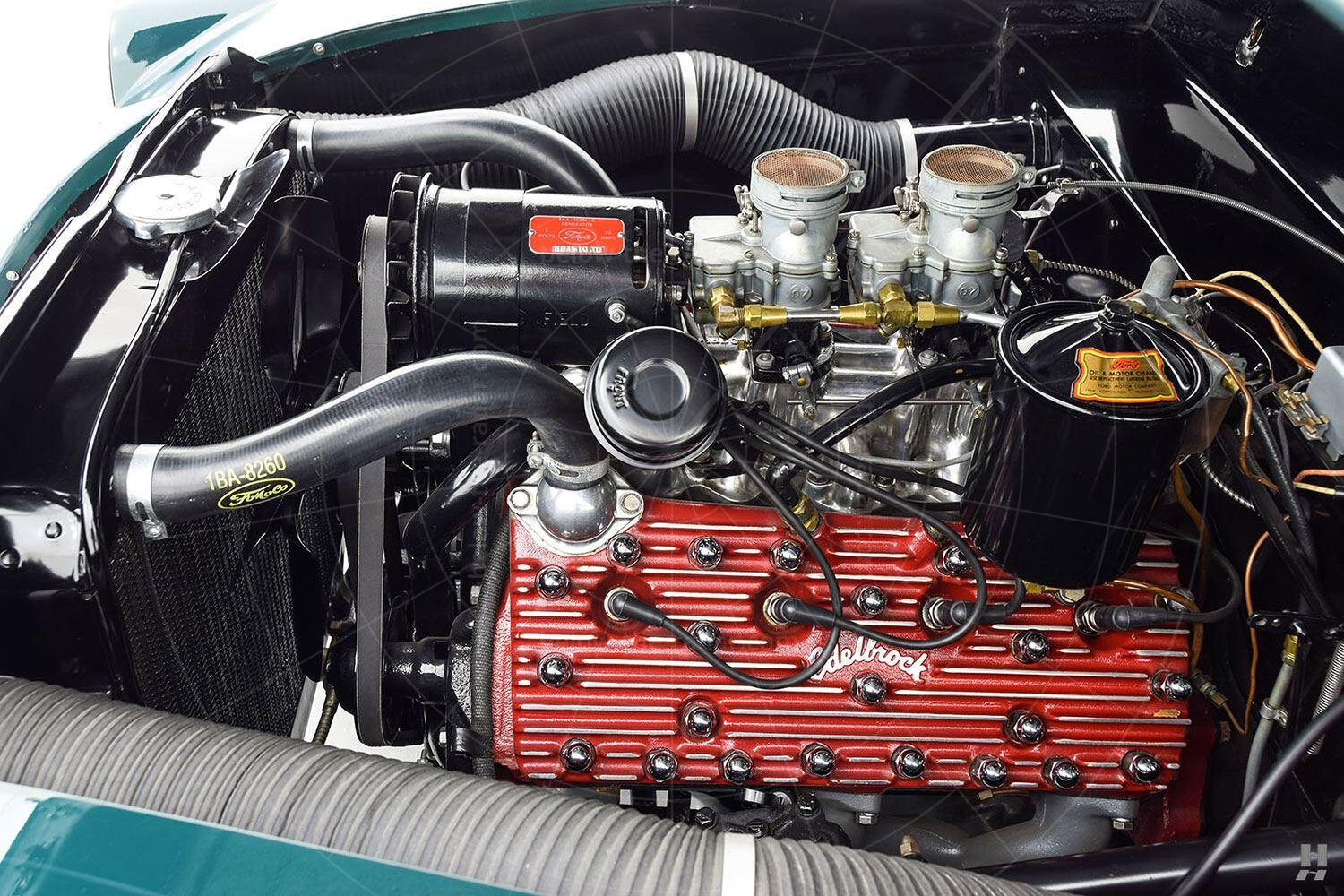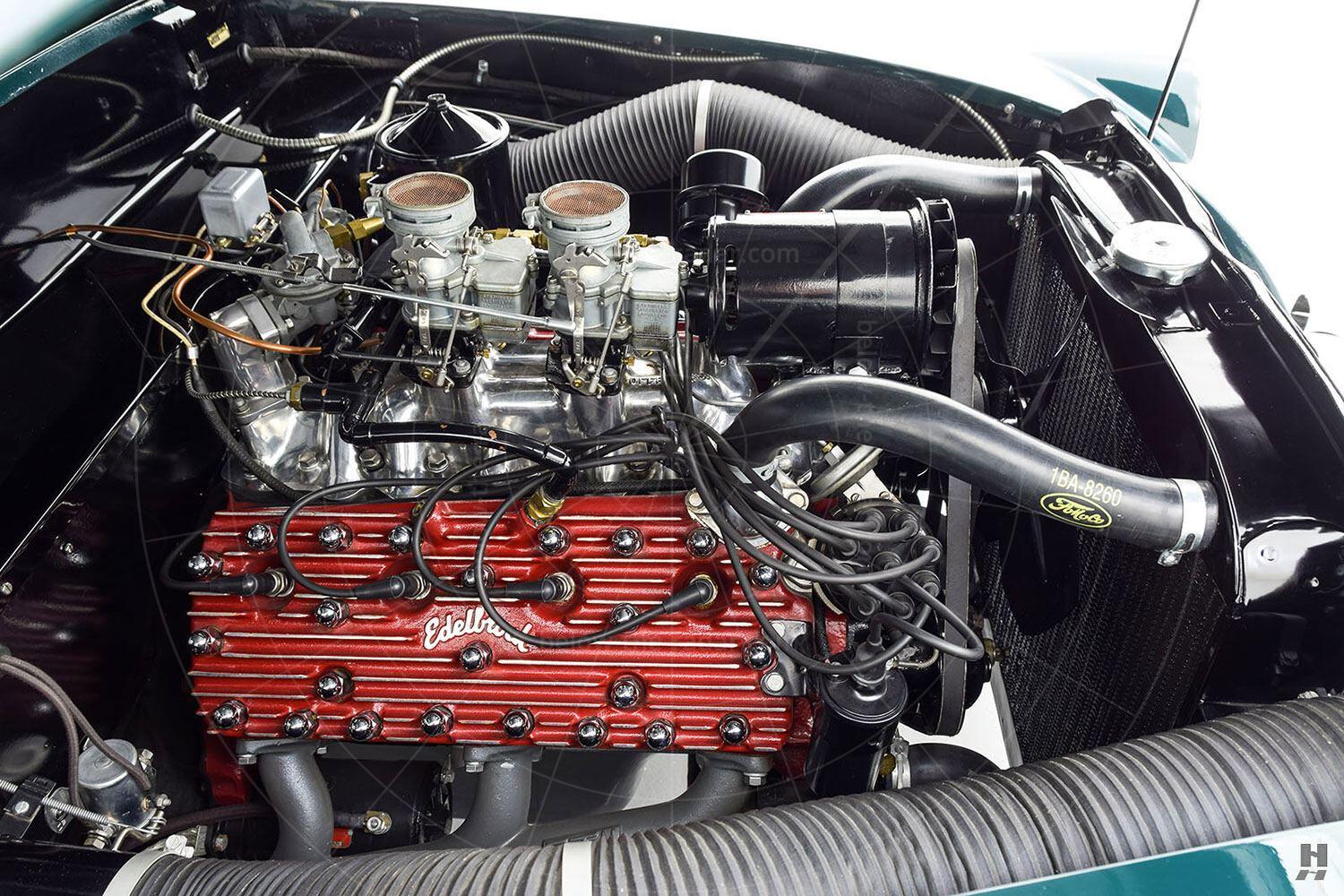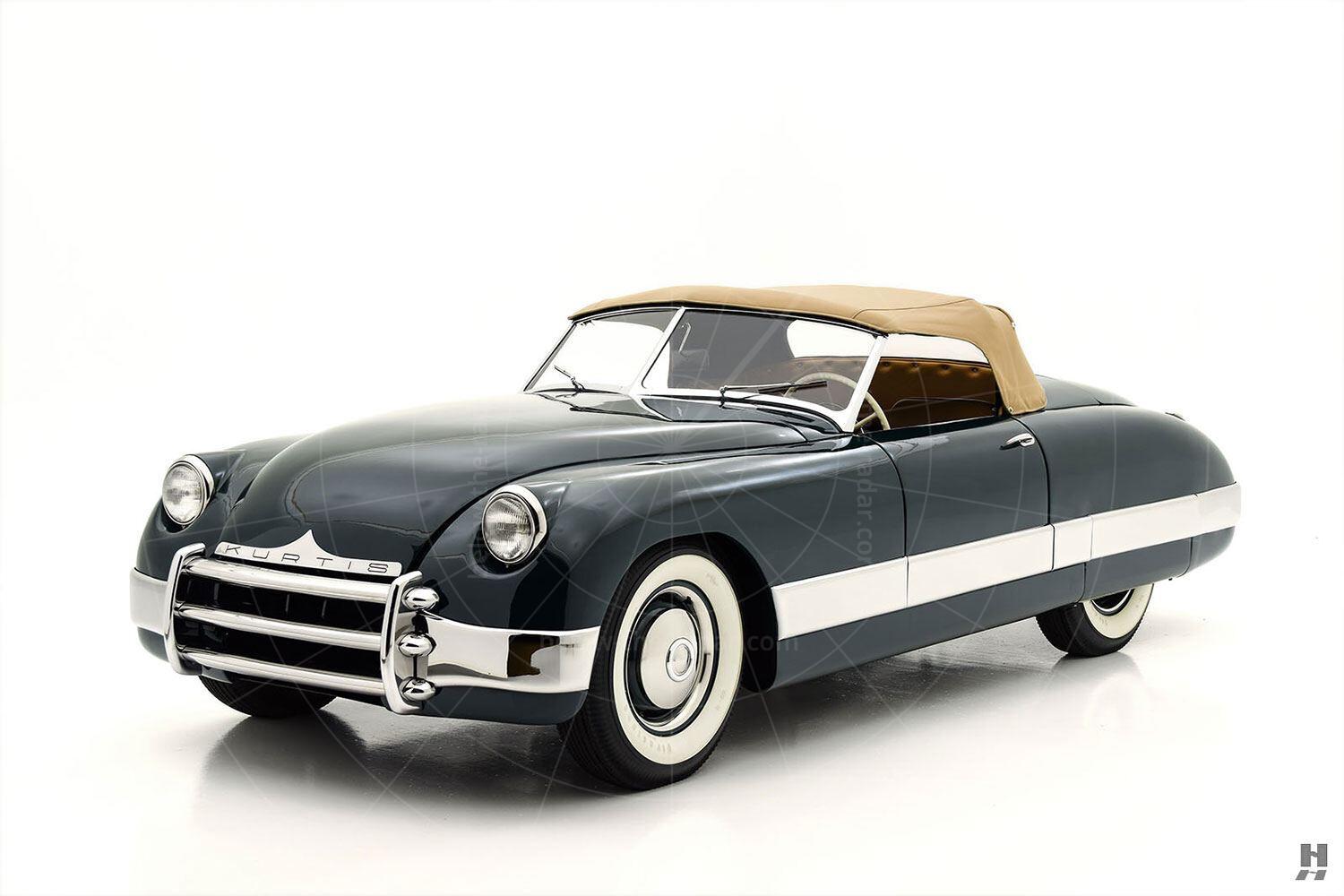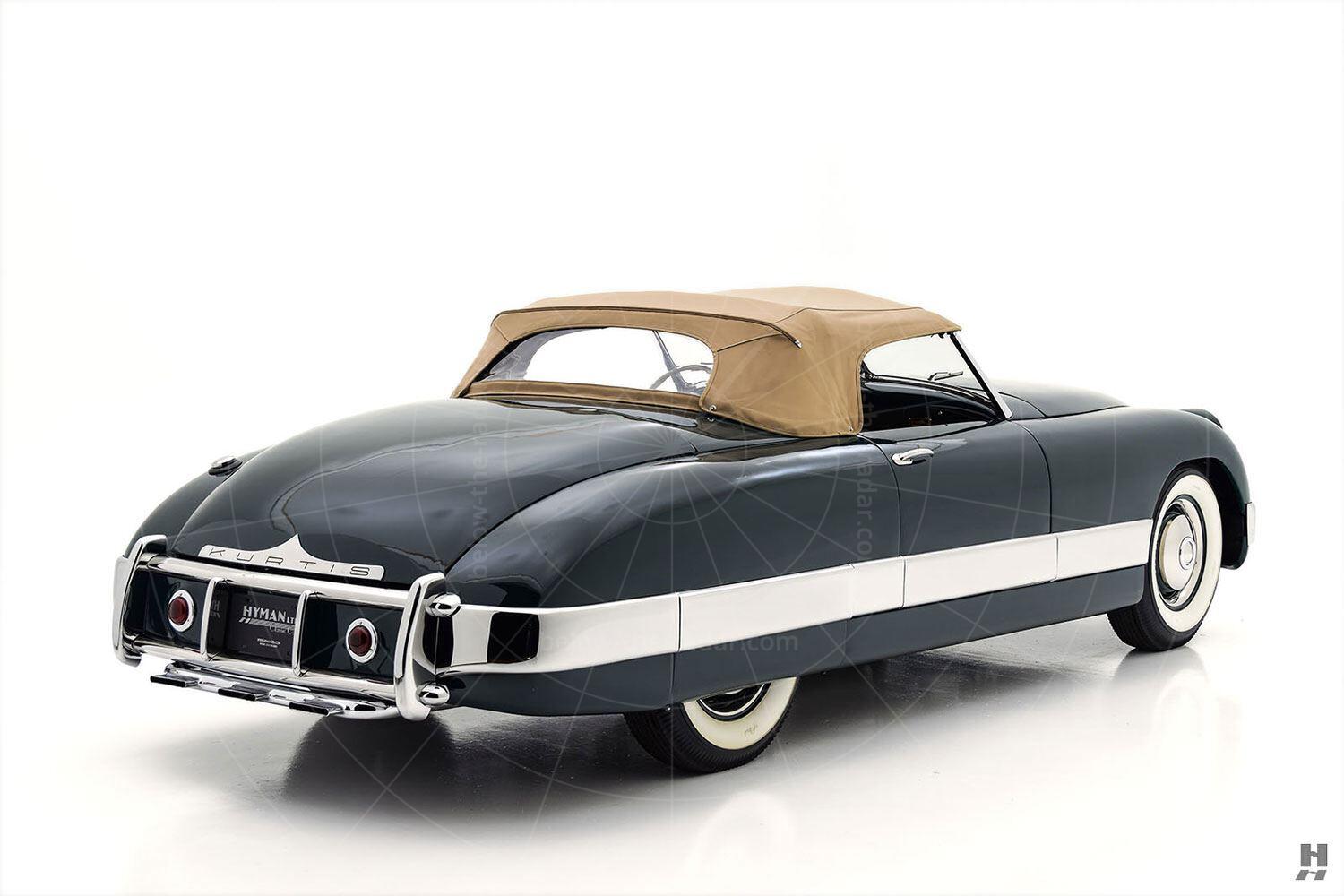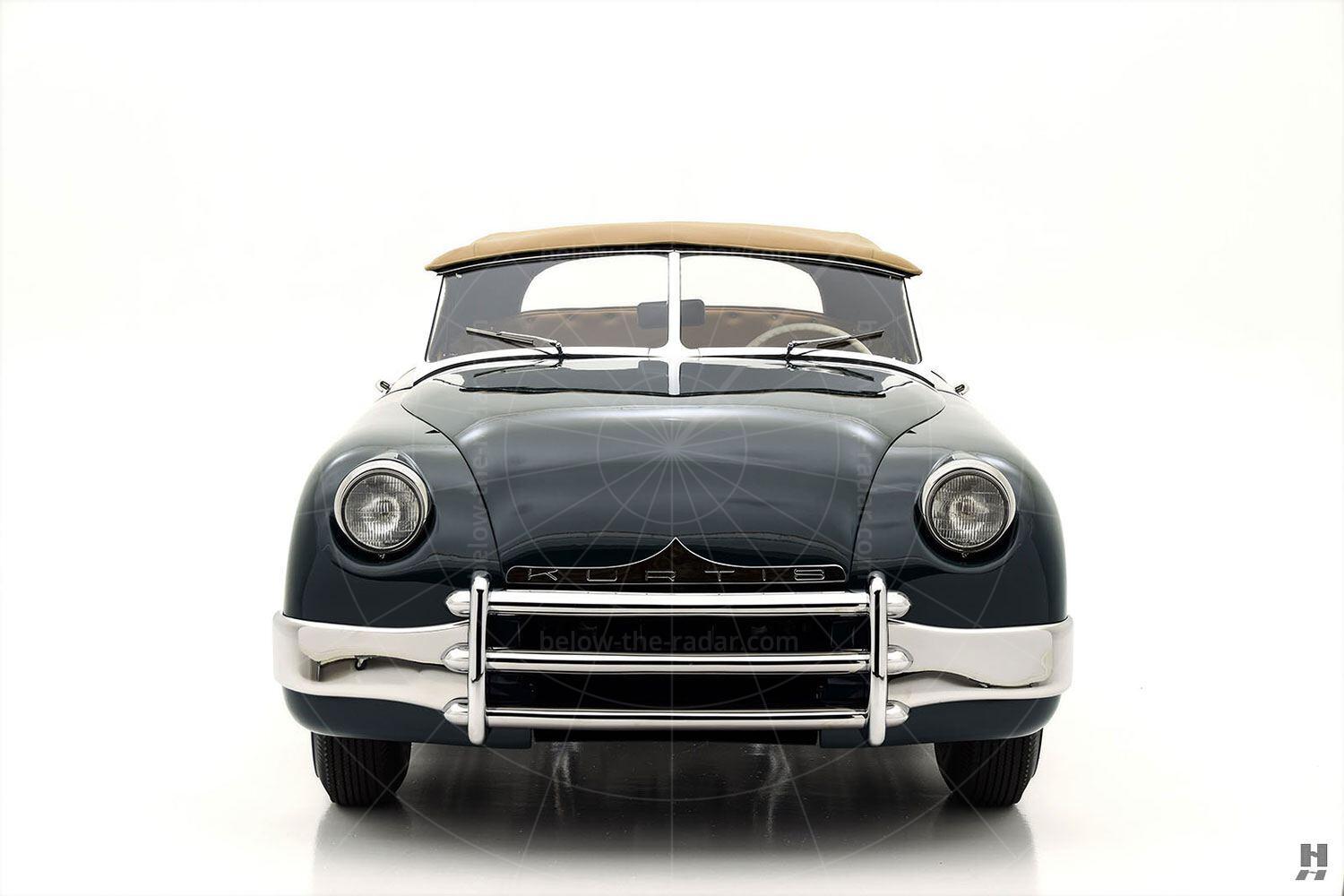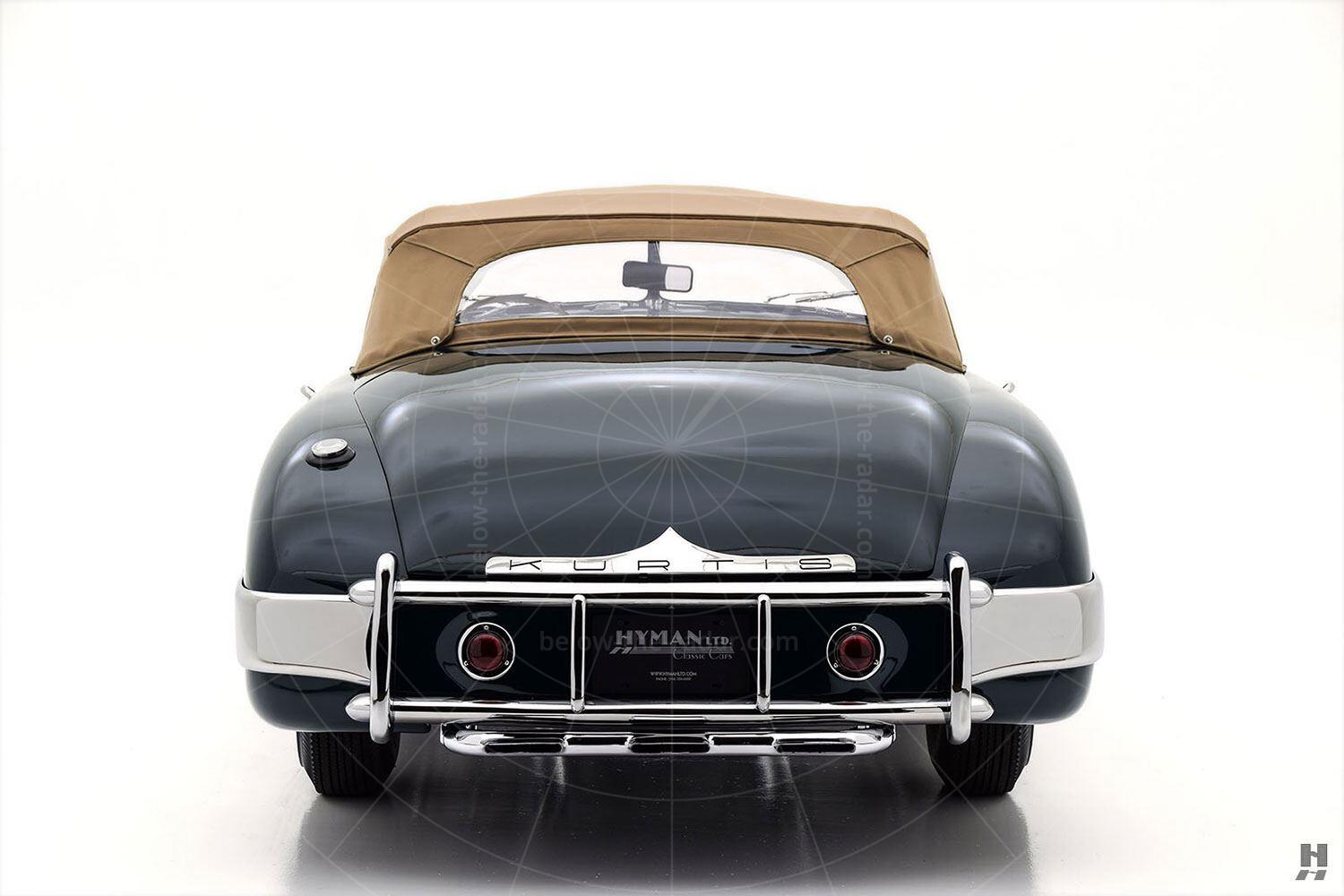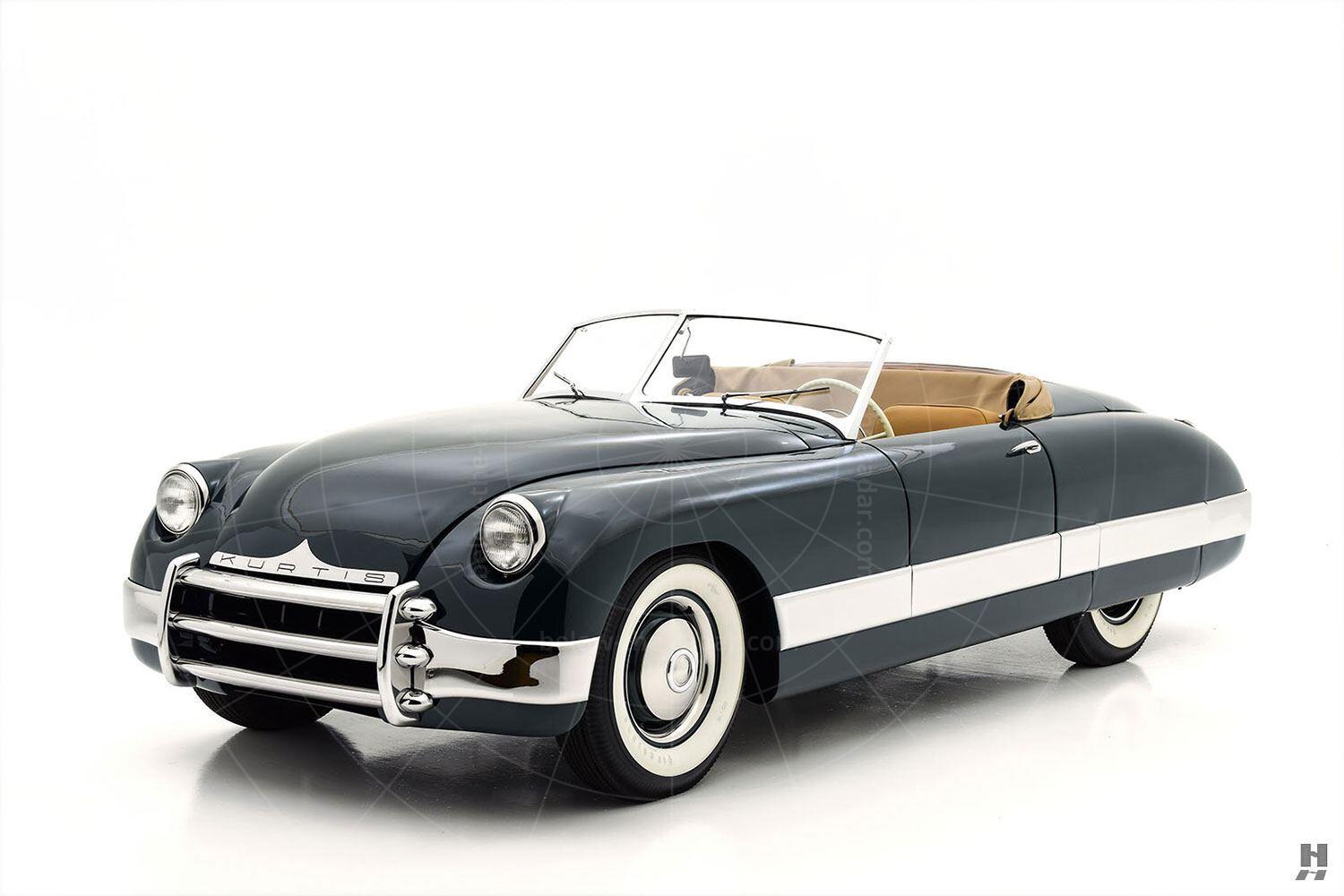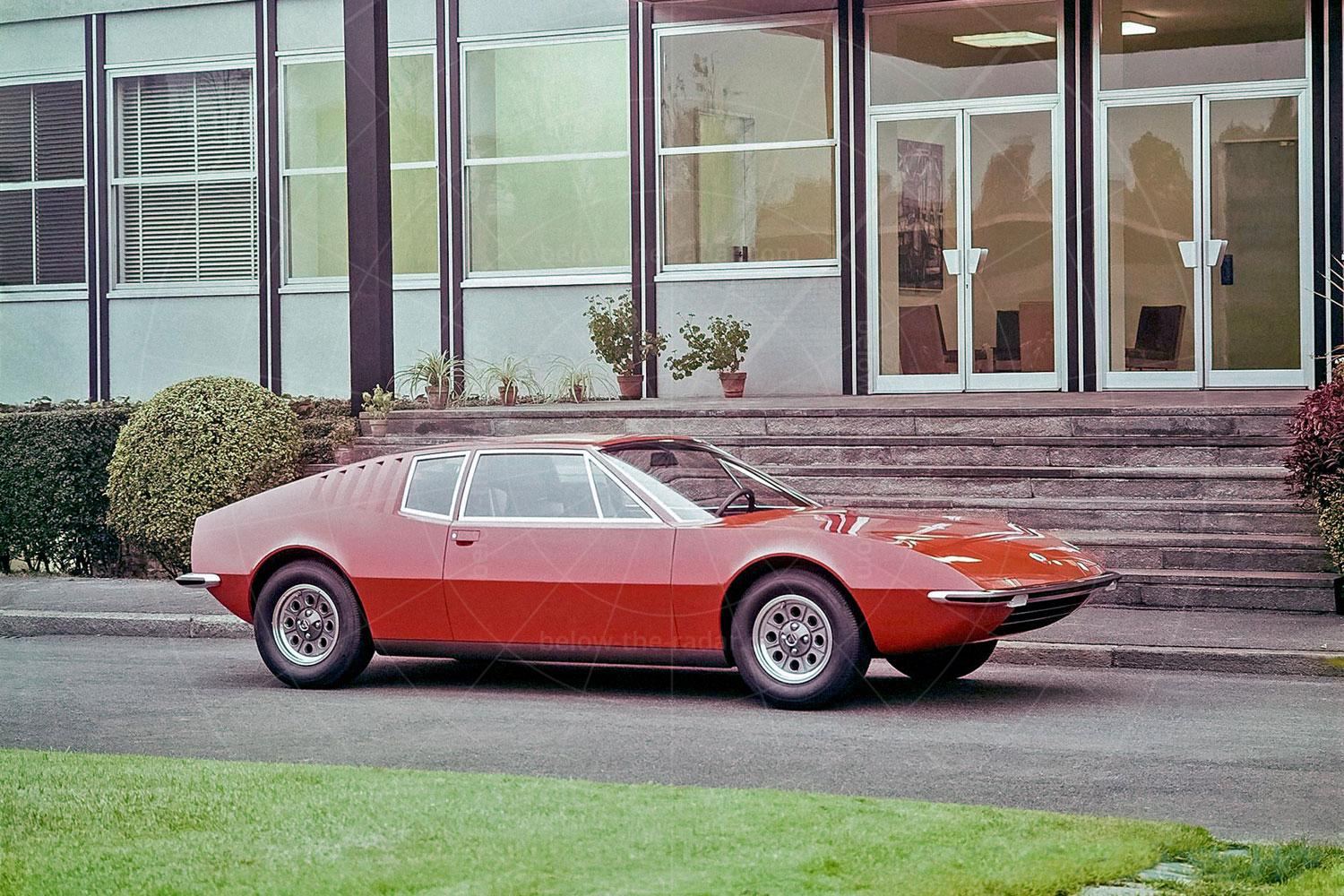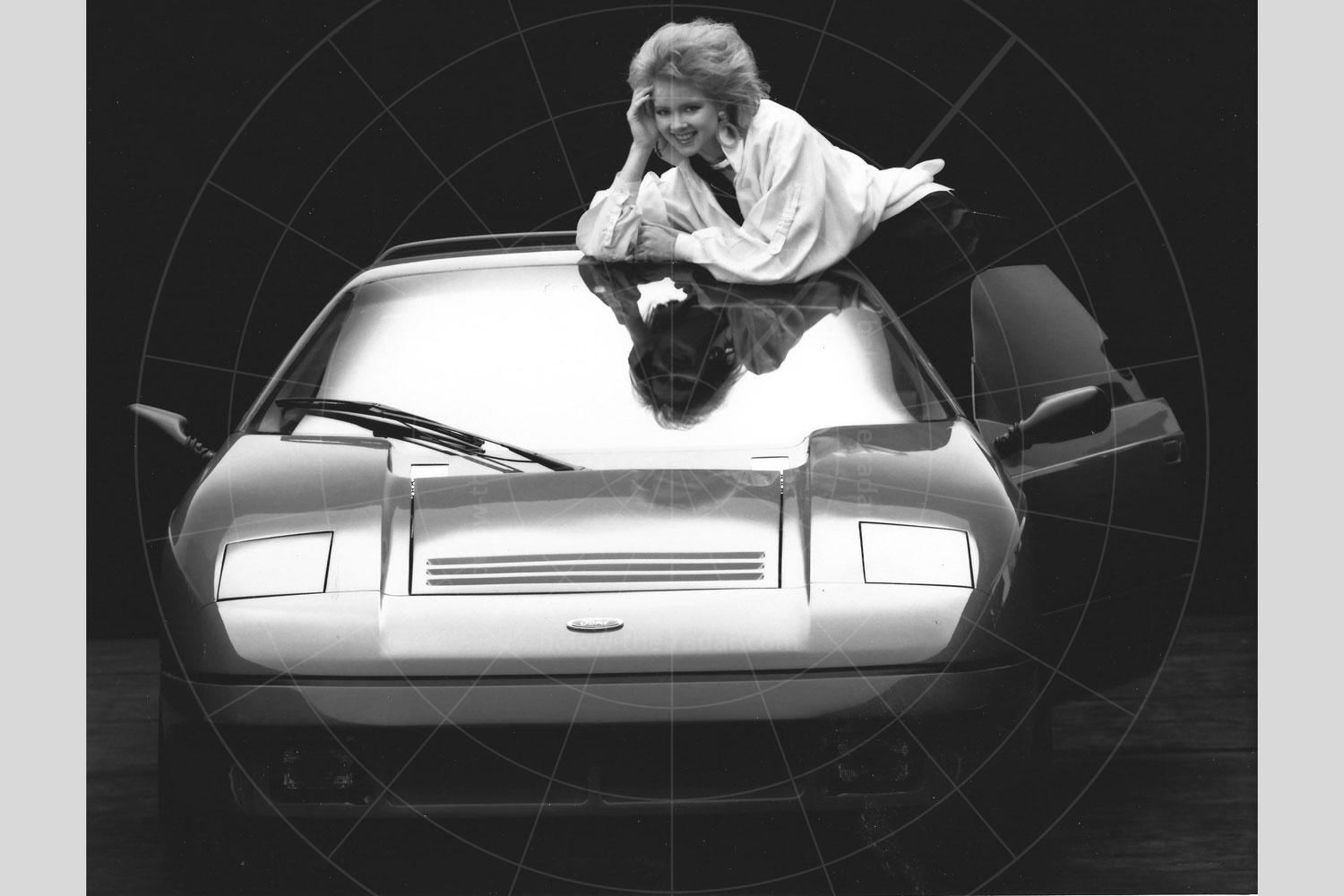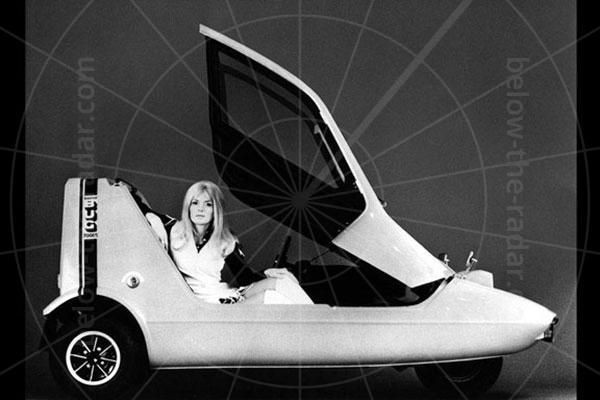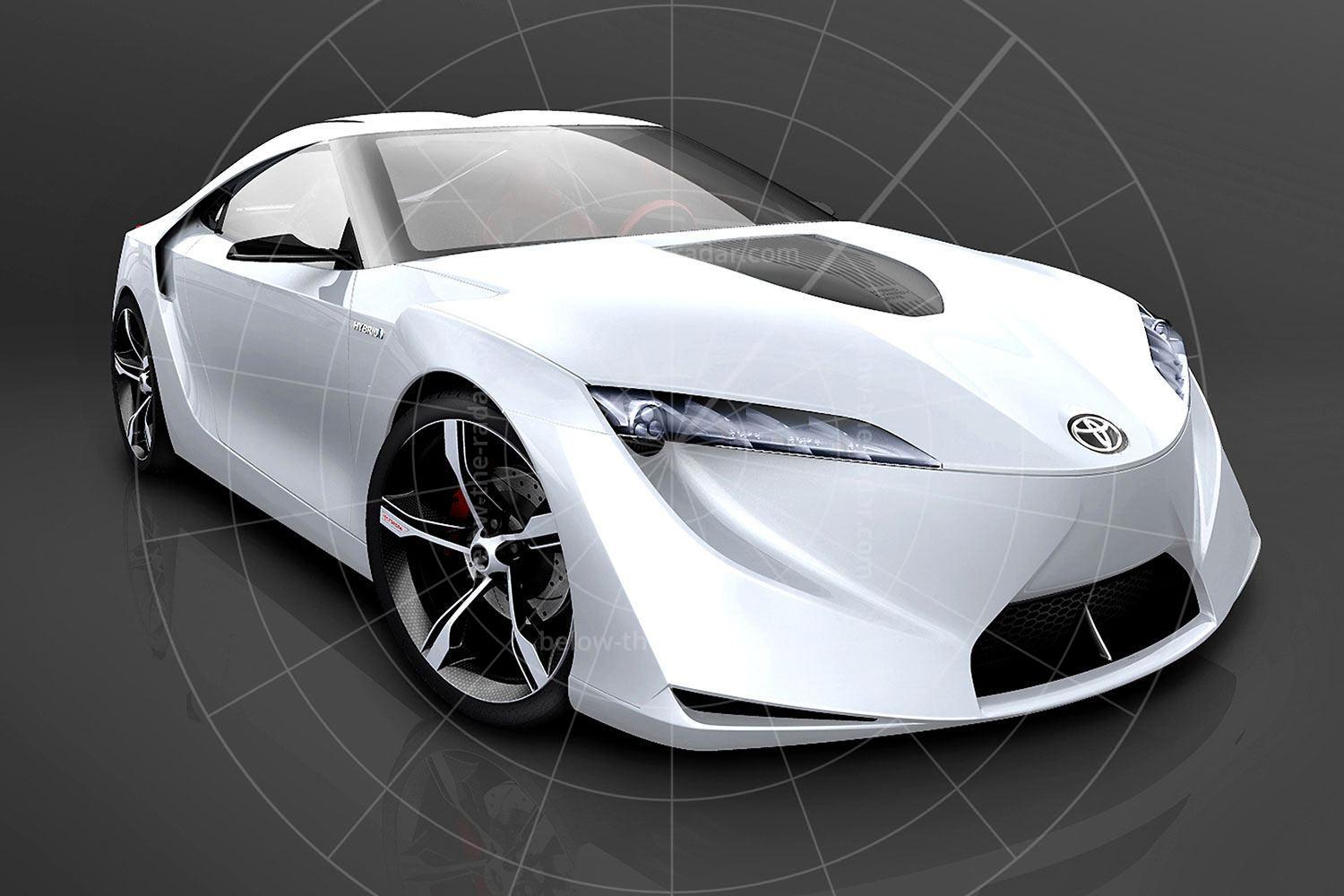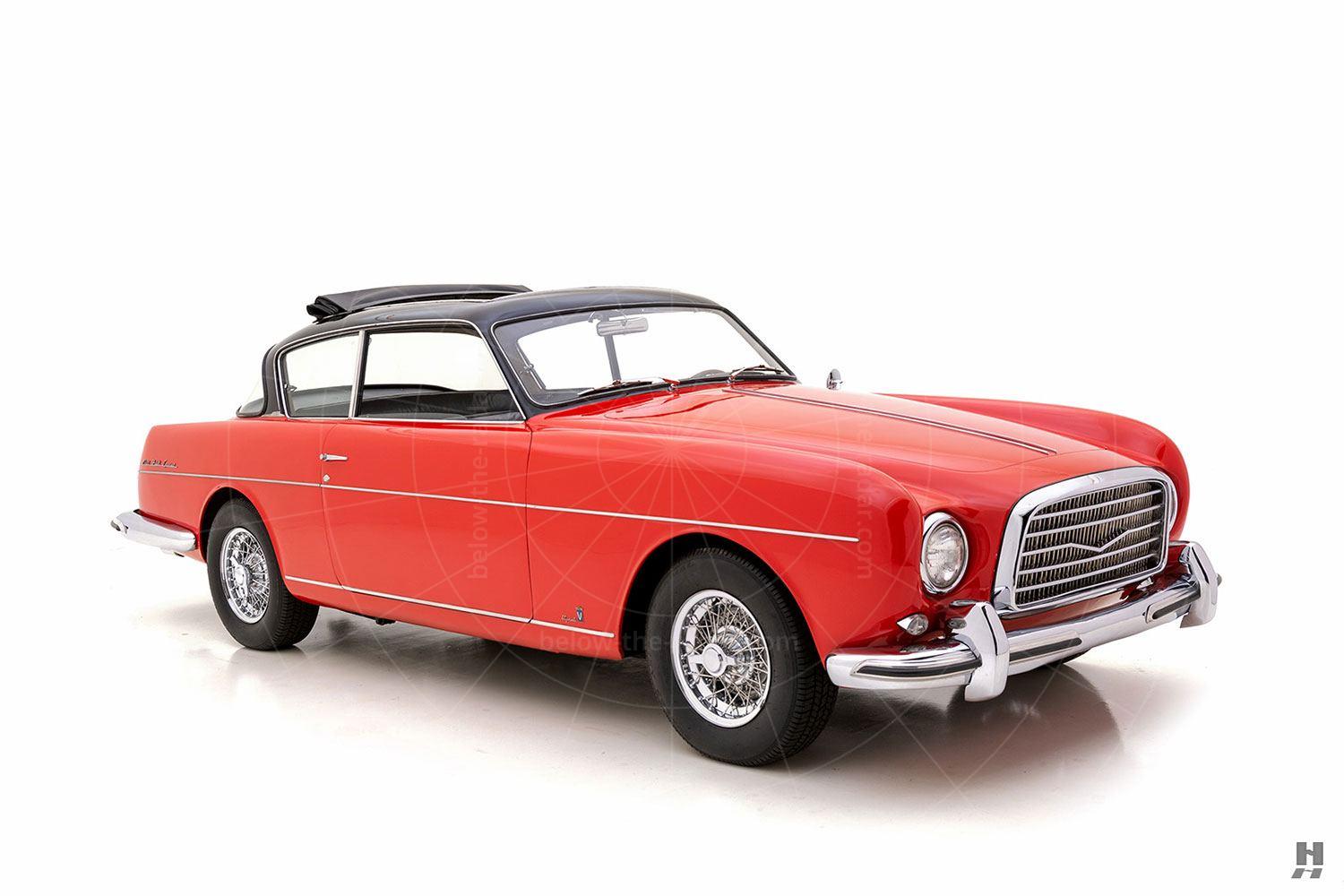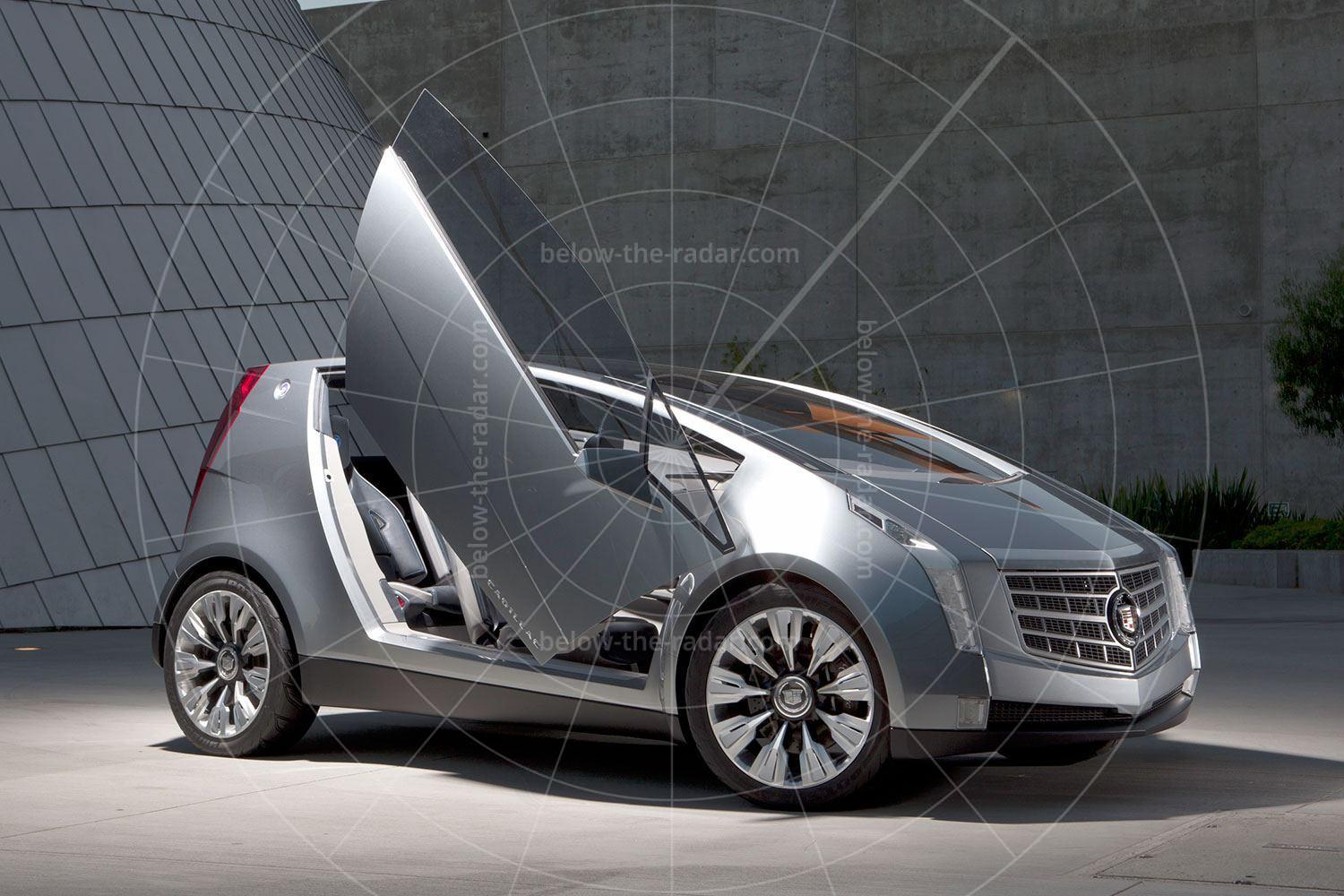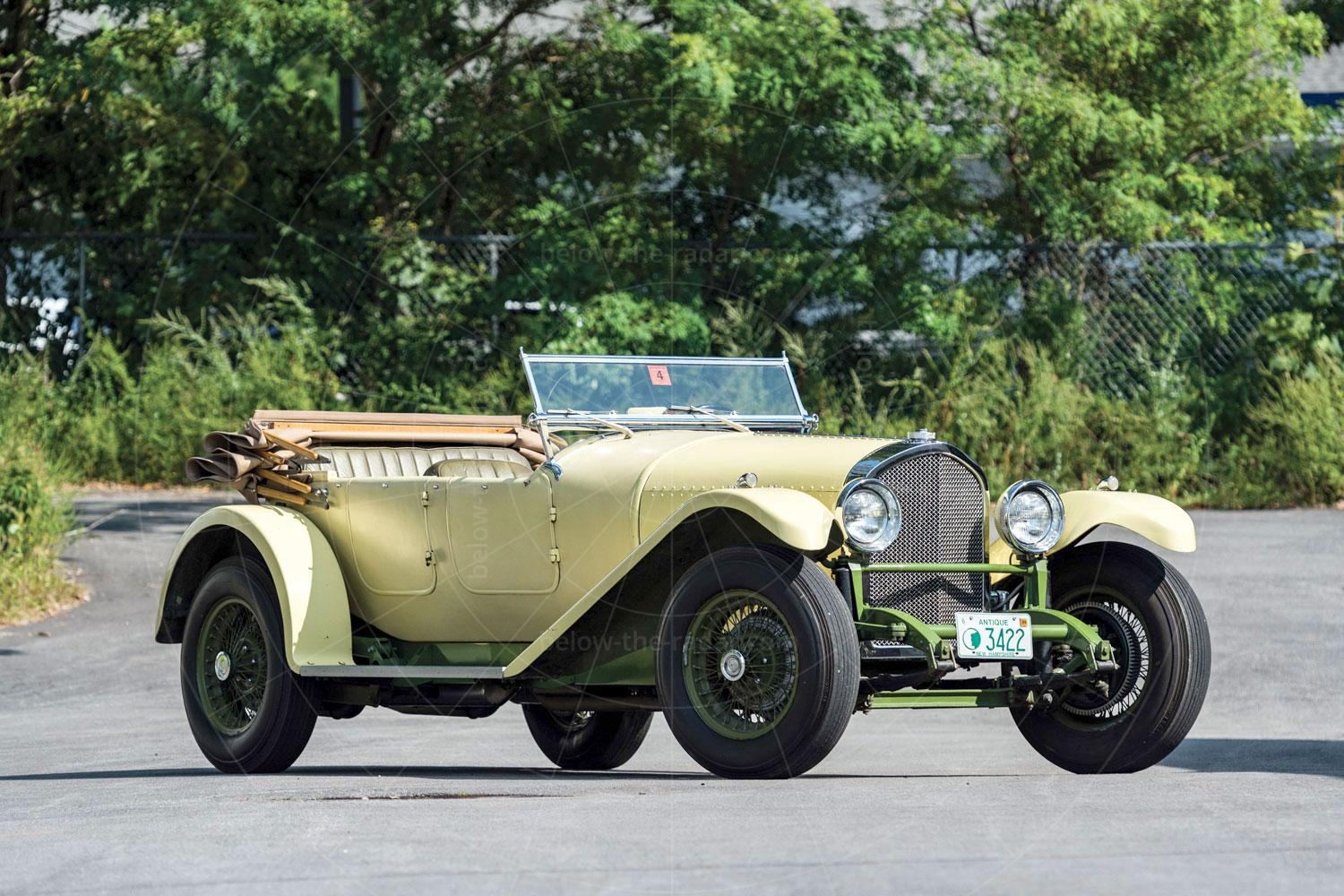Frank Kurtis was one of the biggest names in American motor sport in the 1950s. His Kurtis-Kraft cars dominated American oval racing for decades, winning everything from local dirt bullrings to Indianapolis. The son of an immigrant Croatian blacksmith, Frank Kurtis got his start in the car business at 14, when his family moved to Los Angeles and he took an apprenticeship with Don Lee Coach and Body Works, which built custom bodies for luxury cars, particularly for the Hollywood elite. From the start Kurtis displayed natural fabrication talents, and in his own time he produced a number of one-off customs for private clients.
In the 1930s Kurtis began focusing on the construction of race car chassis. His exquisitely constructed cars were so admired that one was nicknamed 'the jewel box' by competitors. Success brought demand for his chassis and starting in the 1930s over 1100 Kurtis Kraft midgets were built as the cars of Frank Kurtis became the hot ticket in open-wheel racing. That legend would continue through the 1960s with five Indy 500 victories and countless wins on local tracks across America.
While Kurtis was building his successful Midget, Sprint and Indy car business, he kept his team busy in the off season by building Hollywood movie cars and one-off specials. In 1948 he built a unique sports car based on a wrecked 1941 Buick, and the car caused such a sensation that he decided a production version would be the perfect way to expand his business into a new market.
The initial plan was for the car to be available in kit form, with buyers getting a basic frame and body and they could then install whatever engine they fancied. It was also up to them to do the time-consuming (and therefore costly in labour terms) detail finishing work. For those with more money there would also be a ready-built car available from Kurtis's factory.
When Kurtis was working on the prototype of his new sports car, he made an agreement with Studebaker to supply suspension components and its upcoming OHV V8 engine. Based on a reworked Champion chassis, the car would be designed and built by Kurtis, and sold through Studebaker dealers. But production delays with the V8 saw Frank Kurtis grow increasingly impatient. His first prototypes used Studebaker’s in-line six (even a Lea Francis engine was planned), at first naturally aspirated, then later supercharged.
Despite positive reviews from the likes of Tom McCahill of Mechanix Illustrated who tested the supercharged six-cylinder prototype, Kurtis felt that Ford’s flathead V8, with a few choice upgrades, would provide the performance that he really wanted. A deal was struck with Benson Ford (William Clay Ford’s brother) to provide a supply of V8s and when production began in 1949, the Kurtis Sports Car used a combination of Studebaker underpinnings with Ford V8 power, wrapped in a modern and distinctive streamlined body of glassfibre, steel and aluminum.
When it was introduced the Kurtis Sports Car was priced at $1495 for the basic kit, which comprised of the basic frame, unfinished body panels, the doors, windscreen, hardware and brake linkages. For an extra $2000 Kurtis would also supply the engine, transmission and all accessories ready for assembly, but within a year rampant inflation had pushed this cost up to $4700, with an Edelbrock-equipped Ford V8 engine.
The Kurtis Sports Car was decently fast and handled well, but a devalued British pound at this point meant the Jaguar XK120 delivered to Southern California was priced at under $3000 – and the buyer didn't have to put it all together when it arrived. Despite plenty of positive coverage in the press (the car featured on the front cover of the first issue of Motor Trend), Kurtis knew that he was fighting a losing battle, with the Jaguar more prestigious, more sophisticated yet less expensive.
In late 1949 Earl 'Madman' Muntz bought the rights, blueprints and tooling for the Kurtis Sports Car for $75,000 according to Kurtis, although Muntz claimed that he paid $200,000. It's also often claimed that only 15 Kurtis Sports Cars were made, but factory records show that 34 were produced and Kurtis himself claimed that somewhere between 36 and 38 were supplied, some of them as kits in various stages of completion – and it's likely that some were never finished.
Once Muntz had bought the Kurtis Sports Car project he stretched the chassis to accommodate four seats and fitted a Cadillac V8 engine, softening the car and turning the Kurtis Sports Car into a boulevard cruiser. In the process he created the Muntz Jet, which is covered in a separate article on Below The Radar.
The car pictured was sold by Hyman Ltd, who wrote:
Our featured 1949 Kurtis Sports is Chassis number KB003, the very first production car and arguably the most famous of all the cars built. This very special example was Frank Kurtis’ personal car which he used extensively to promote the project. From new, this car was fitted with a hot Ford 8BA 'stroker' built by Vic Edelbrock himself with Edelbrock heads, Offenhauser intake and twin Stromberg 97s.
In 1949, the Kurtis was brought to the Bonneville Salt Flats to take part in the very first Bonneville Nationals, where, in the hands of Wally Parks (famously the founder of the NHRA and first editor of Hot Rod magazine) KB003 was driven to a sports-car class world record two-way average of 142.515 miles per hour.
After Bonneville, a milder Ford V8 was installed and KB003 remained with the Kurtis family, with both Frank and his son Arlen enjoying it on the road. It was later sold to a racer from New York, where it is believed to have gained a Cadillac engine. It may have been a bit of a handful with the Cadillac power, as the body sustained some damage in the hands of some less-than-talented drivers. The car was eventually discovered in the mid-1970s by Charles Treadway of Iowa who purchased it from Ms. Genevieve Cowan. Treadway began a restoration but soon sold it to Marlin Weakly of Moline, Illinois in the late 1970s. Both Treadway and Weakly had corresponded with Frank Kurtis in attempt to get parts and information relating to this very unusual automobile, but alas, the restoration would stall until many years later.
In the hands of the most recent owner, a collector and aficionado of unusual sports cars, the Kurtis Sports was finally treated to the comprehensive restoration it so deserved. Thoroughly researched, KB003 was returned to its original specification using a Ford flathead V8 with period speed parts including Edelbrock heads, twin Stromberg 97s and an Offy 2 x 2 intake – all genuine parts sourced from early hot rod experts. The body was completely restored and finished to a high standard in dark green and the extensive chrome – including the signature wide band that wraps around the car – was beautifully refinished. The missing windscreen frame was recast using an original template, and numerous other key items sourced using the help of Arlen Kurtis and others.
Many thanks to Hyman Ltd for the use of its pictures to illustrate this article.

